MAY N





BENEDICT D. MARAVILLA
Higher-ups of Bicol University (BU) confirmed that they requested the continuation of the senior high school (SHS) program in its laboratory school and are awaiting approval from the Commission on Higher Education (CHED).
In an interview with The Mayon on March 5, BU President Dr. Baby Boy Benjamin Nebres III confirmed the university’s intent to push through SHS, and is positive about CHED’s response to the appeal.
“We are not actually worried about that. In 2019, the Board of Regents of the university already approved the continuation of the senior high school,” Nebres said.
On Jan. 2, CHED Chairman Prospero de Vera III officially announced and verified the memorandum on the discontinuation of the SHS program in SUCs/LUCs dated Dec. 18, 2023, stating that its implementation is only limited to the K to 12 transition period from the school year 2016 to 2017 to the school year 2020 to 2021.
Nebres emphasized that although the senior high school is not the university’s mandate, it is still kept running for some reasons.
“The reason why you are here, the basic education is here, is because of three things. One is that we are one of the original normal universities in the
Philippines. Two, we are the center of teaching excellence. Third, we are the center of excellence in teacher education,” Nebres enumerated.
Dr. Ma. Teresa Abainza, unit head of the Bicol University College of Education Integrated Laboratory School - High School (BUCEILS-HS) also expressed her sentiment on the said directive..
“It’s better if we could maintain the senior high since we are also serving other provinces in the Bicol region, not just Albay,” Abainza said.
“Basic education in BU should not be removed. This is where BU started. If we’re going to abolish it, there is no sense of history,” she added.
As the Bicol University Senior High School Admission Test (BUSHAT) looms near, 85 percent of the Grade 10 students of the BU Junior High School (JHS) Department expressed ‘caution’ about not being accepted to the institution again.
In a survey conducted by The Mayon, 10 percent of the population said that they are ‘somehow confident,’ and 5 percent said that they are ‘very confident’ about their future performance in the admission examination.
The high-recorded number came after
last year’s BU JHS’ low passing rate to the senior high school, being recorded at 7.5 percent.
A student who opted to stay anonymous expects that more students will be anxious about the said matter and affirms that this became more reason for them to study harder for the admissions test.
“I am not that confident but I am optimistic of what the future holds for me in this university,” they said.
This year will be the third time BUSHAT will be administered to filter applicants before entering the department.
FREAL JAVEN DEL CASTILLO
Bicol University (BU) is facing financial challenges after the P25-million slash from its total budget, following the government’s budget cut on state universities and colleges (SUCs).
This was admitted by Dr. Benjamin Baby Boy Nebres III, SUC President IV of BU, during an interview with The Mayon last March 5.
During the interview, Nebres cited that the budget cut was due to the low utilization of funds in the past years.
“The idea of the government is this: they will give you this amount of funds but you haven’t [maximized] it. How much if they will give you [the same amount] of budget, would you still be able to spend it?,” he explained.
This has posed challenges to the university in meeting the changing landscapes of administering education.
“[For instance], times are different preCOVID and post-COVID. These are big changes in looking at the needs of the students,” Nebres added.
Nebres also highlighted an irony in the budget system wherein SUCs are expected to cover supplementary expenditures while there are no funds provided to cover these additional expenses.
“It’s ironic because if you look at it, the budget isn’t increasing, but you’re required to set aside 5% for GAD (Gender and Development) and 5% for DRRM (Disaster Risk Reduction and Management), yet no additional funds are provided,” he pointed out.
He emphasized that the budget slash has also affected BU’s fund allocation for Maintenance and Other Operating Expenses (MOOE) which includes expenses for utility bills, facilities, and repairs.
In connection, Nebres expressed his desire to address BU Laboratory School’s problems in facilities such as the insufficient ventilation in classrooms, however lack of budget hinders it.
“At the end of the day, my main problem is budget. I want to solve it, but we are tied up to the limited budget we have,” said Nebres.
The BU President underscored that, in terms of funding, BU’s mandate is only in higher education; BU Laboratory School only relies on the development fee and share from the BU College of Education (BUCE).

According to CHED, SUCs/LUCs with laboratory schools may still accept enrollees in the next school year but students will no longer receive vouchers.
This is in line with the Department of Education’s order for the dismissal of the Government Assistance to Students and Teachers in Private Education (GASTPE) in SUCs/LUCs, starting the school year 2023–2024, except for entering Grade 12 students.
BU President Nebres noted that the retention of senior high has associated conditions.
“CHED said to remove the discount or the voucher system in Grades 11 and 12,” Nebres said. If you feel people are
thinking that it will be costly for them, don’t enroll in BU,” the president added.
Meanwhile, Cesar Bosque, parent of a grade 11 student, expressed that he was dismayed when he heard that the voucher would be removed and empathized with other families who also felt the same.
“It’s a pity in the sense that there are a lot of families that depend on the lesser expenses in state universities. The voucher would have been a big help,” Bosque claimed.
Teachers’ salary
Groups distress over the removal of GASTPE as it also threatens the job of thousands of teachers working in SUCs/ LUCs.
KATE DE LA PENA
Three foreign exchange students settled in Bicol University College of Education Integrated Laboratory School - High School Department on Aug. 23, 2023 as part of the American Field Service (AFS) Intercultural Program.
The exchange students were Vilfred Jensen from Denmark, Hugo Durand from Canada, and Frauke Sauthoff from Germany.
Jensen expressed that he was ‘astonished’ as he had “never seen people have that much energy in school,” referring to his classmates.
The exchange students admitted to struggling with adjusting to the Philippine’s heat and long school days.
“I feel like just being judgmentfree and being open-minded is a great way to adapt to anything really,” Jensen noted.
Durand claimed that he just ‘went with the flow’ so that he
could adjust to the culture in the Philippines.
“I just went with the flow, simply looked at what people were doing and learned about the way things are done here,” Durand stated.
Meanwhile, Ma. Teresa Abainza, unit head of BUCEILS-HS, emphasized the significance of exchange programs in the university.
“It fosters the partnerships with the institutions outside the country and it ensures that internationalization is in place. They learn our culture, and we also learn from them,” she stated.
The exchange students are set to go back to their home countries after the school year 2023–2024 is over.
BUCEILS-HS orgs make comeback after years of inactivity
Two organizations from the Bicol University College of Education Integrated Laboratory School High School - High School (BUCEILSHS) returned in 2023 following years of hiatus.
Soaring Eagles, the drums and lyre corps (DLC); and The Mayon’s Radio Broadcasting Unit, made their comeback in the first quarter of school year 2023–2024, both conducting respective screenings in search for their new members.
Heads of each group expressed pride amid the numerous applicants they have received during the auditions.
Both organizations have been re-accredited and recognized for their intent to return on campus.
Teacher group Teachers Dignity Coalition, and student group Samahan ng Progresibong Kabataan raised said that the order will lead to economic displacement for teachers.
“We fear that mechanically following suit [on the order] without serious consideration of the drawbacks on education stakeholders will lead to another learning crisis,” they said.
BU President Nebres explained that some part-time teachers in the laboratory school are the only ones affected by this circumstance.
“There are only two to three part-timers in the senior high school and they are being covered by the developmental fee, so we don’t have a problem with it,” Nebres said.
He added that it is ‘fortunate’ that most instructors in the high school already have permanent designation as it would lessen the impact of the said directive if ever implemented.
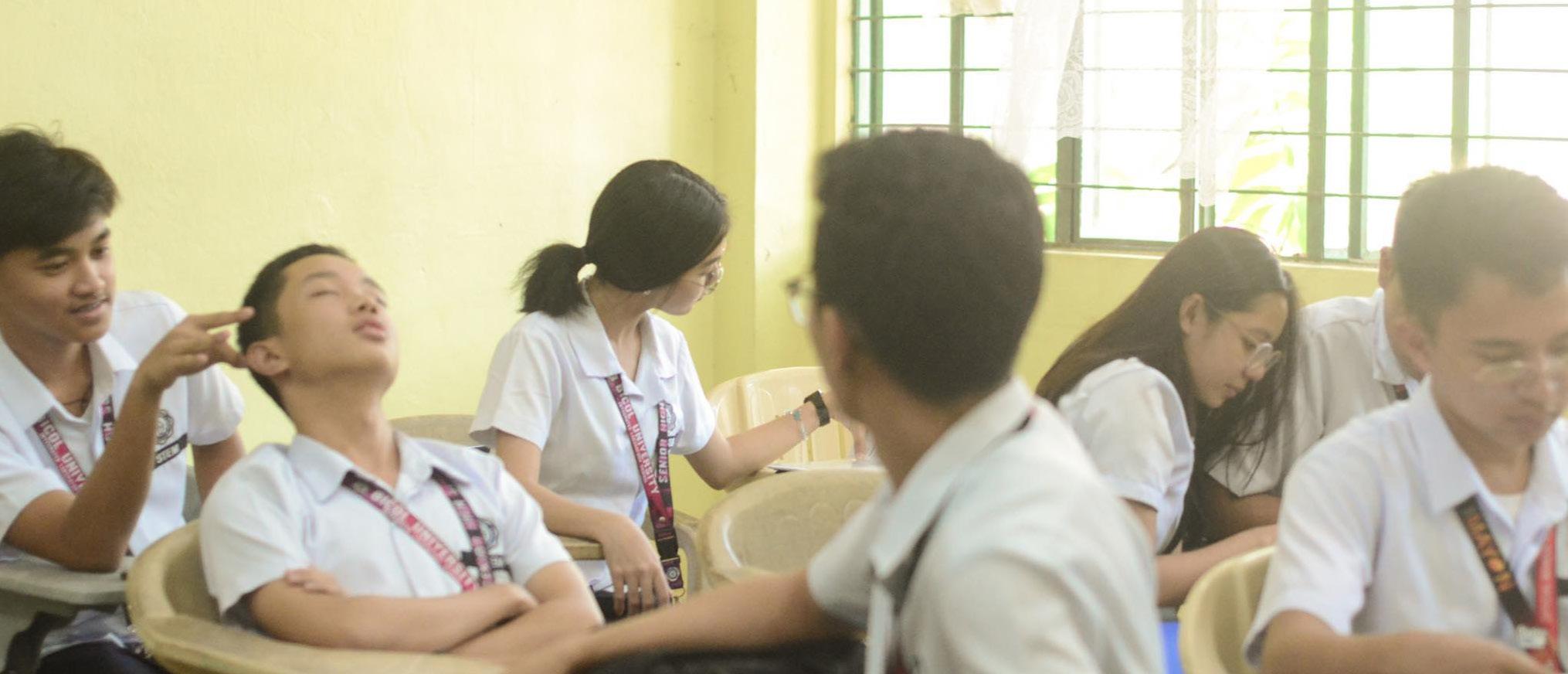
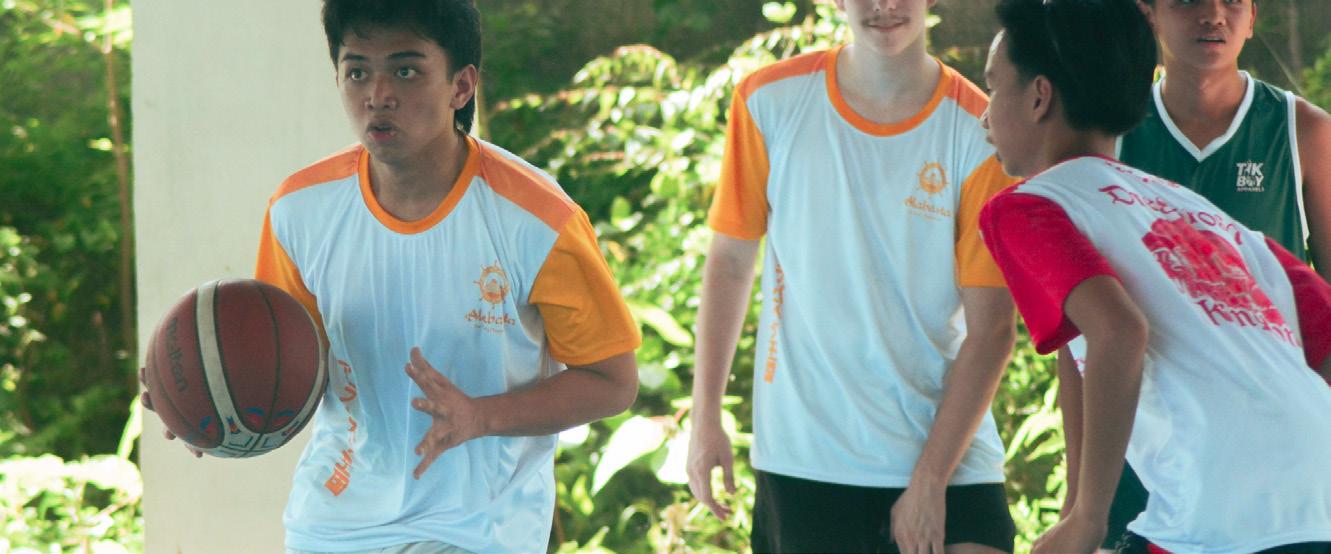
“It wasn't perfect, but it was successful.”
This was the statement of Jan Junell Boncodin, president of the Sports Club of the Bicol University College of Education Integrated Laboratory High School - High School (BUCEILS-HS) as he recalled the challenges faced during the Intramurals 2024.
As the BUCEILS-HS kicked off the semester with the three-day Intramurals on Jan. 17–19, several problems were said to have hindered the conduct of the event.
Boncodin stated that there were financial restrictions when organizing the event.
“Since we have a limited budget, we had to compromise to award the participants
properly. They would feel invalidated if we gave certificates only, so we gave medals to the sporting events to gratify them and make them feel special,” Boncodin stated.
Meanwhile, BUHS SSG President Fiona Christine Dollente remarked that the lack of manpower was their main concern.
“The SSG lacked manpower since a majority of it is composed of the junior
high school, who had to prepare for their exams a week before the Intramurals. The senior high officers were not available because classes had not officially started and were split into four teams, so I was doing the majority of the work,” Dollente added.
Despite the numerous conflicts in organizing the Intramurals, both agreed that the event was successful.
“It wasn’t perfect, but it was successful. I hope the students enjoyed the healthy competition and learned sportsmanship regardless of their team’s outcome,” said Boncodin.
“I think it was a hit. We managed to pull it off despite limited time, thanks to the Sports Club and the administration’s support. I’m proud to bring back Intramurals after the pandemic hiatus,” Dollente expressed.
JAVEN DEL CASTILLO
FREALBicol University College of Education Integrated Laboratory School (BUCEILS) proposes the adoption of the Department of Education’s (DepEd) revised K to 10 curriculum, dubbed as “MATATAG,” in its existing ‘enriched basic education curriculum’.
As part of its function, BUCEILS is now in its third year since the implementation of its own crafted ‘enriched curriculum’ in the elementary and junior high school levels that started during the school year 2021-2022.
In an interview, Dr. Ma. Teresa Abainza, unit head of BUCEILS - High School Department, emphasized that although the school is not under the direct mandate of DepEd, the laboratory school still need to abide with the MATATAG curriculum, following the condition that at least the core subjects are aligned with that of DepEd.
“Now, we have enrichment subjects under the existing curriculum, and these enrichments shall remain. This means
that we will not change the enrichment part of our current curriculum, but for the core subjects, we have to follow DepEd,” Abainza explained.
Abainza expounded that the proposed curriculum will continue to offer the enrichment subjects which includes environmental science, digital technology, applied arts, and foreign language, in addition to the core subjects from the MATATAG Curriculum.
The unit head also underscored that the school will retain the enrichment subjects because it is what makes BUCEILS different from other schools under DepEd.
“The question often posed to us as a laboratory school is what makes our




curriculum different from that of other schools in DepEd. It’s because of the enrichments we offer and the infusion of themes like food sustainability and GCED [Global Citizenship Education] in the framework of our subjects,” Abainza said.
When asked about how changes in curriculum helps in meeting the changing needs of students and communities, Abainza noted that curricula should be responsive to local needs and global demands.
“In terms of curriculum, we always anticipate change. No curriculum is permanent. The proposed curriculum may change in a few years again, because it has to be dynamic in the current needs of society,” she concluded.
Students of Bicol University College of Education Integrated Laboratory School
- High School Department (BUCEILS-HS) are calling for a ‘safety net’ for jeepney drivers as the government enforces the Public Utility Vehicle Modernization Program (PUVMP).
The said concern came amid worries about the program’s impact on drivers’ livelihoods and the cultural significance of jeepneys.
The Department of Transportation, through the Land Transportation Franchising and Regulatory Board (LTFRB), launched the PUVMP in June 2017, aiming to replace aging jeepneys with safer and more environmentally friendly vehicles.
Deadline for the jeepney consolidation was initially in July 2020 but has been extended several times, with the latest on April 30.
Noreen Ortega, a grade 11 student of BUCEILS-HS and a daughter of
a jeepney driver, shared her family’s perspective on the PUVMP, worried for both financial and sentimental reasons.
“The jeepney is older than I am, and it represents not only how hard my father works to support our family but also our connection to Filipino culture,” Ortega said.
Ortega also highlighted the potential financial strain the phaseout could cause and mentioned her father’s involvement with a jeepney driver’s organization that is working to address the issue.
Moreover, a student who declined to be named expressed practicality concerns, highlighting the potential cost burden on drivers and the possibility of fare hikes.
“The PUVMP’s impact on drivers’ finances and student fares requires careful assessment,” they said.
In a memorandum released by LTFRB on Jan. 31, it was noted that jeepney and UV Express operators who have opted not to consolidate will only be allowed to ply their routes until the deadline set for them.
“The authority to operate the units of all unconsolidated individual operators is extended until 30 April 2024, provided the unit is currently registered with the Land Transportation Office (LTO) and has a valid Personal Passenger Accident Insurance Coverage,” read the memorandum.


After three recorded deaths along the newly opened Philippine National Railways (PNR) connecting towns in Albay and Camarines Sur provinces, Albayanos raised concerns about the security in the train routes.
The first recorded incident occurred on November 6, 2023, when a 29-year-old man collapsed to epilepsy and fell on the railroad in Apad, Polangui, Albay.
Another accident followed on November 26, as a man with hearing impairment was hit by the train in Concepcion Pequeña, Naga City; and the most recent on January 20, 2024, when another man was bumped in Sugcad, Polangui.
CITIZENS’ SENTIMENTS
Atasha Vasquez, a grade 12 student of Bicol University who resides in Polangui town, said in an interview that she was alarmed by the incident and expressed sympathy to the bereaved families.
“Of course, I am not delighted to hear about the news, especially since it happened in my hometown. I feel sad for the victims and the families who mourned their deaths,” Vasquez uttered.
When asked how these unfortunate events could be prevented in the future, she stated that the citizens and the government should be responsible for maintaining railroad safety.
“I think that the people, especially those living near the railroads should be well educated about railway safety…And the government should, at least, do
something about the people who reside near railroads. I think that they should have regular maintenance of roads and an advanced system to alert train operators for possible hazards, as well as civilians,” Vasquez added.
Moreover, a commuter of PNR who declined to disclose their name, raised doubts about the security of the railway system as he heard the information about the deaths, but said he would continue to take it due to affordability.
“Perhaps, I would hesitate whether I’d still take the train or not given the bad news, but since it is the most efficient and affordable mode of transportation, I would still lean there,” the commuter noted.
They believe that it is not the management’s fault that such accidents happen, citing ‘personal recklessness’ as a reason for it.
“I think people are too complacent with it. When I get off the train, I see children loitering around railroads without the supervision of an adult. The PNR does their best to avoid these incidents from happening,” they stated.
OFFICIALS’
and responsibilities that concern the safety of the citizens living along the railroad areas on the nine barangays in the town where the PNR passes through.
The said directive ordered barangay heads to deploy tanods to oversee and monitor situations near railways, as well as to put up warning signages and markers to “provide accessible information and guide of train operation schedule.”
In line with this, Police Brigadier General Andre Perez Dizon also called for ‘shared responsibility’’ among agencies and local government units to secure PNR train operations.
“I have directed our [Philippine National Police] personnel in the AOR [Area of Responsibility] from Naga to Legazpi City, Albay, to take part and actively remind residents in these areas to refrain from loitering along the railroad tracks. This is a crucial measure to ensure their safety,” Dizon expressed.
The PNR Naga-Ligao route returned its operations on July 31, 2023, and the Naga-Legazpi route on December 27, after a six-year hiatus.—with reports from Philippine Daily Inquirer
CARLA ANGELA RICO
To encourage active youth participation in electoral exercises, Bicol University (BU) and the Commission on Elections (COMELEC) Bicol launched BU KUGOS COMELEC: Special Satellite and Register Anywhere Project on Feb. 19–20 at the East Campus Gymnasium.
The program created an avenue for BUeños to avail voter registration, attend the voter education workshop, and other services that the agency is offering.
Nicole Llarena, a grade 12 student, expressed that the said undertaking will ensure a new batch of well-aware voters for the next elections.
“As someone who will be a voter who does not have much of an experience on the electoral process, I think collaborations like this can serve as a guide for young voters. Moreover, the services these collaborations provide also make the registration process more accessible.” Llanera said.
A total of 2,962 newly registered voters were recorded during the two-day program, exceeding the expected target, according to the organizers.
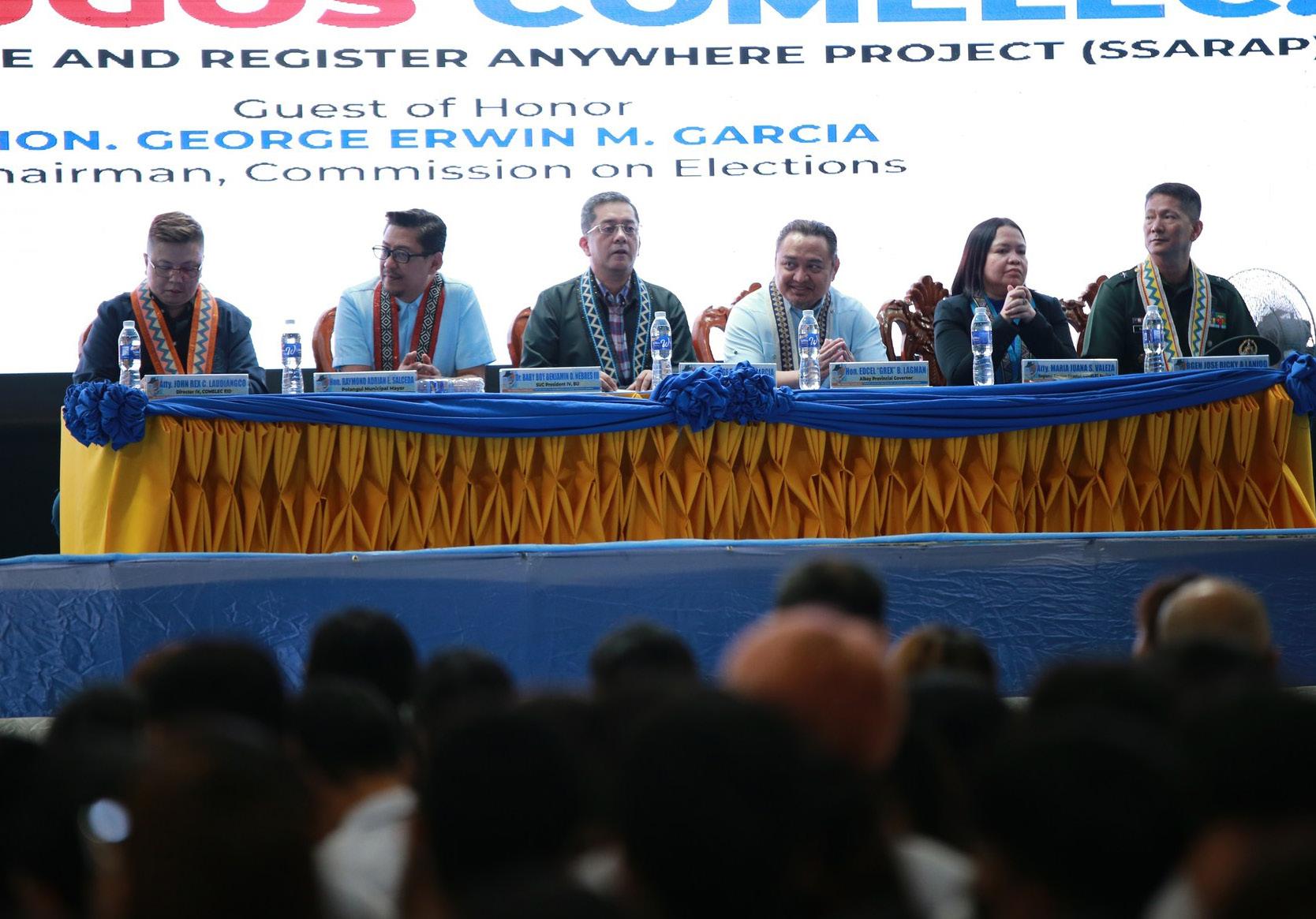
PRINCESS LORAINE THEA T. LEE
The United Nations Educational, Scientific and Cultural Organization (UNESCO) selected Legazpi City in Albay province as one of the 64 new Global Network of Learning Cities (GNLC).
In a virtual event on Feb. 14, Legazpi City was announced as one of the GNLC’s new members, the second in the Philippines, following Balanga City in Bataan that was recognized in 2015.
According to the Department of Foreign Affairs (DFA), the city
“With the inclusion of Legazpi City, the Philippines now has two cities listed in the GNLC. These cities have demonstrated exceptional commitment to fostering lifelong learning opportunities for all within their local communities,” the DFA said.
“As a Legazpeño and part of the learning sector, the news of Legazpi City joining the GLNC fills me with immense pride and excitement. For me, this is not just a local achievement but a global recognition of our city’s commitment to education and lifelong learning,” Miraflor expressed.
GNLC members are expected to promote inclusive learning from basic to higher education through utilizing ‘enhanced’ systems.
Kiah Aesha Miraflor, a student of Bicol University College of Education Integrated Laboratory School, expressed her pride in receiving the news.

Cliché as it sounds, government incompetence is a daunting reality that Filipinos are forced to live by. As the dust settles on the latest fiscal deliberations, the Philippine government is confronted with the clamor from faculty and scholars who were shortchanged in the 2024 budget allocations. When faced with economic declines, the education sector tends to find itself in the back seat of national priorities.
Despite the 9.5% increase in the proposed 2024 national budget, allocations for school communities experienced hefty cuts. This discrepancy flagged questions and backlash from stakeholders of the nation. It is disappointing that the government appears ready to discard the significance of the education sector abruptly when confronted with financial constraints. The revocation of funding rights only serves to underscore the repercussions of poor decision-making, casting a shadow of uncertainty over the country’s future prospects.
Among the affected communities, State Universities and Colleges (SUCs) bear the brunt of the impact. From the already insufficient PHP 107 billion for 2023, only around PHP 101 billion is being allotted for 2024; a big gap to fill in and adjust for. SUCs play a crucial role in providing affordable higher education to a diverse demographic of students, including those from disadvantaged backgrounds. Neglecting adequate funding for SUCs not only hinders educational opportunities but also perpetuates socio-economic disparities. This can be indicative of an anti-poor government stance.
Aside from SUCs, the Commission on Higher Education (CHEd), the main agency overseeing tertiary education in the Philippines, will also suffer cuts in public funding. From the current PHP 31.7 billion budget for CHEd, the agency is set to receive a PHP 742.5-million cut, lowering its budget to only PHP 30.9 billion in 2024. The widespread impact of these budget cuts gives the impression that the government is eliminating its learners, instead of actually saving the economy.
With the whole situation turning into a fiasco, the lack of action from the department head was not news in the country, earning a grimace from its citizens. In the first year of her term, Vice-President Sara Duterte tried to rake in a PHP 100 billion fund from the palace to “solve” all education woes within six (6) years. Such exaggeration led to empty promises as the anticipated reforms following her assumption of the Department of Education (DepEd) Secretary position have not manifested significant benefits for the education sector.
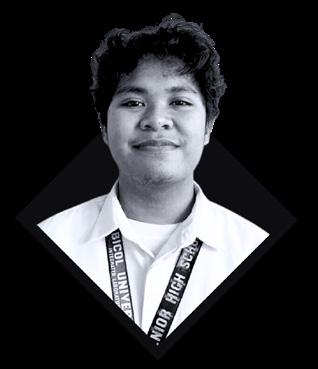
Recently, the Office of the VicePresident (OVP) also faced scrutiny for shamelessly requesting PHP 150 million-worth confidential funds for DepEd expenditures in 2024. Despite constituting only a small portion of the controversial cuts, these sums can be allocated for greater use which clearly has no reason to be deemed confidential. As of the moment, there were no progressive actions under Duterte’s jurisdiction; only budget controversies wherein amidst that, her absence spoke louder than the statements she released to defend the importance of maintaining the school communities.
Also ironically, the budget cuts are happening while military education receives a PHP 3 billion budget - a 13% increase or an additional amount of PHP 342.9 million from 2023. It is concerning how the government remains frugal in funding the academia but willing to throw millions for their army. The apple does not fall far from the tree after all, as this disparity reflects the priorities set by the administration, particularly in their emphasis on the Reserve Officers’ Training Corps (ROTC), which was observed in the Duterte Dynasty’s campaigns.
The Philippine government has lost sight of the vital role of education in nationbuilding and development. For the longest time, it has focused on fostering a liberal economy open to foreign investments and products, prioritizing big local corporations that neglect industries. What officials fail to realize is that the academic institutions serve as pillars in cultivating future professionals crucial to the country’s economy. If longterm solutions are what they sought for, education should be a top priority.
However, the DepEd’s concept of “quality education” is rooted in a bankrupt paradigm. The government strives for an education system that prepares learners who are fully equipped for the global market, yet fails to allocate sufficient resources to support this vision. The 2024 budget reflects the slipshod management of the education sector, driven by self-interests, exacerbating existing problems and making matters worse. Investing in education is not just about funding schools; it is an investment in
ALDRIN ROY F. RAMIREZthe knowledge, skills, and potential of future generations. Lessening the burden of the economical crisis that the country is facing should not be a responsibility of the students. When education budgets are slashed, it limits opportunities for learning, skills development, and academic advancement. Therefore, it is crucial to safeguard the learning experience of Filipinos without compromise. Reforms in the laws within the education sector are imperative to protect the future of young learners.
Budget cuts are a harsh reality faced by governments around the globe, often necessitated by economic constraints or shifting priorities. In the case of the Philippines, money management remains a persistently challenging household issue. Alongside financial illiteracy, corruption stands out as a pervasive threat, siphoning resources meant for essential services. Despite the oath they have taken, the country is still swarmed with greedy men vying for that high position accessible to the public treasury.
For years, the call for responsible voting has fallen on deaf ears, with the power of shading ballots capable of altering the nation’s trajectory. Choosing the right leader is paramount in navigating these setbacks effectively.
A capable official recognizes the critical role of education in nationbuilding and economic development. A true and competent leader should know better than treating the education sector as a backburner.
The academic institutions serve as pillars in cultivating future professionals crucial to the country’s economy. If longterm solutions are what they sought for, education should be a top priority. ” Policies must be made to ensure that everyone is educated equally and effectively. ”
Whenever I scroll through my TikTok and social media feeds, it’s not uncommon to stumble upon videos or posts that would leave any witness with an unsettling feeling. Fifteen-second videos on social media—commonly known as “reels”—have become breeding grounds for a distasteful trend that perpetuates an age-old ailment of society: the normalization of mocking individuals who are, to put it simply, “special.”
One can’t help but ponder the presence of those individuals mocked and berated behind the screens and the ones perpetuating these harmful narratives. They’re not just distant figures on the internet; they could very well be our classmates or our peers—and they are.
BUCEILS-HS has been open about the truth about accepting a wide variety of students, even those who have special needs; hence, we are beckoned to ask: How have our special cases affected the school? And are we ready to cater to more of them?
Tackling questions that revolve around individuals within an ambiguous spectrum calls for a wide spectrum of answers. When these questions are asked of the teachers, a common answer arises: “We are ready!” As advocates of inclusivity, the educators thought that we simply could not refuse
education to anyone. They believe that we are ready, and we have always been ready.
Teachers, serving as the frontline in addressing this issue, believe that their efforts suffice to have more students with special needs. This confidence stems from the extensive trainings, briefings, and even consultations with professionals that were arranged by the unit head and the parents to accommodate the needs of our special companions. Faculty members highlight success stories, such as having a limbless student graduating from BUCEILS-HS a few years back, as evidence of their readiness to provide quality education to all. Despite the teacher’s confidence, the unit head holds a different perspective.
She emphasized that despite their best efforts and the success they’ve experienced, there remains a crucial issue

that needs to be addressed head-on in the near future: the absence of comprehensive policies from higher authorities. The calls for amendments from the high school department have gone unanswered. Amidst the absence of concrete policies and frameworks present in the university handbook, the teachers have strived for the best in fostering a healthy learning environment for all
Having faced one side of the spectrum, it was time to know if this overwhelming confidence resonates with everyone. Hence, as with anyone growing fond of this special story, I sought the thoughts of the majority—the students. Their responses echoed varying perspectives. A group voiced eagerness for inclusivity, reminiscing the enriching experiences it could bring to the class. In spite of that, most students have expressed reservations regarding the matter, brought about by the disruption in learning due to the teaching methods towards classes having peers with different needs. Many students do not want to deal with a special case.
Contrasting the professors’ perspectives
with those of the students, a dissonance emerges—a gap between the institutional narrative and the lived experiences of those within our school community. While the teachers remain content with the status quo, the unit head remains adamant, and the students reap the adverse effects that come with the scenario.
The clashing ideals simply fall down to problems that are so common, it probably sounds cliche: lack of communication and rules that are designed to fail. The teachers—working amidst a lack of guidance—are disabled by the handbook to teach efficiently.
While there’s no doubt that they have made sincere efforts to address the cases at hand, It’s clear that we lack a clear policy outlining how to handle the social and academic interactions that accompany them. Students are asked to be compassionate, and they are, but compassion can only go so far. The teaching methods that the teachers are forced to apply are not fit for special cases, and they are left unaware due to a lack of communication with regard
to the misgivings of the student body. The students are left toiling in their own misery, while the teachers are left with no choice but to try their best with a student handbook that does not permit them to do so.
Education is a complex job that takes years of guidance to be mastered. How can one expect the educators of BUCEILS-HS to handle special cases without a proper guide? We are simply unfit to handle more special cases for we are not permitted to do so. Policies must be made to ensure that everyone is educated equally and effectively. Never expect the treatment of one case should be done to another. Revise the student handbook. It is the student handbook after all and all students—special or not— deserve a place in that handbook.
The handbook has to know one thing: We have special cases—learn to treat them special.
Smart students. Lectures in BU were more advanced than in any other schools since it is a university. If you were a student there, they’ll treat you like a college student.
Felt like it would be awesome to get in since BU is a prestigious university and was regarded as the “premiere state university” in Bicol so I had really high expectations. BU also felt like a getaway for selfimprovement
PROMPT: What was BU like before enrolling?
At first, I was not really aware that BU had a Senior High School program. Then I heard about how it was hard to get into BU since they prioritize and give slots to those that came from public schools
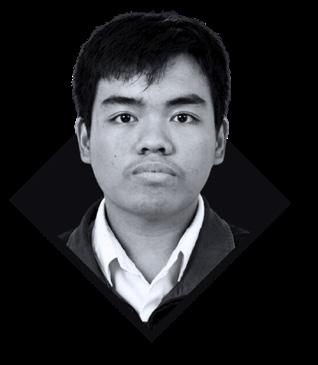
Somebody chose to lead the path.
It’s always fresh yet old news when we hear people rally about education being everyone’s right. Fortunately, the desired answer to that clamor might have just been introduced by Bicol University (BU).
In a press article released on Feb. 26, the university through the BU Admissions Office (BUAO) announced a revision of the existing admission policy, aiming for an inclusive guideline that will give students in the marginalized sector a bigger chance to experience free and quality education. From the current criteria that consist of the entrance test performance and general weighted average in grades 9, 10, and 11 with an 80-20 percentage; the new policy being named the ‘Equity Policy’, will include the socio-economic profile (SEP) and shall apply a 65-20-15 percentage to determine the students’ admission rating.
the poor are on the priority of it. After all, we are fighting for their right to study without them costing their lives. If the Philippines is not yet ready for a freeof-tuition college, at least including their circumstance in the process of a school that is actually supposed to cater to them, is already a big step towards achieving inclusivity.
As someone from a middle-class family, I stand on the boundary of celebrating and worrying. I have friends at the opposite poles of the spectrum, and hearing their sentiments gives me a feeling of both understanding and hypocrisy.
The privileged ones are pressured to be part of the ‘world-class university’ and are driven by the desire to have a quality education which perhaps they cannot see from other institutions. The question on the validity of the policy sparked among them, saying that intelligence measures no wealth. But that’s the only case for them—a burden also carried by the unprivileged plus the financial instability. Factors such as the lack of access to good education and the familial responsibilities are obstacles they bear, and our lives are nothing harder than them. Someone who excels among the poor is laudable, not lucky, yet should not be romanticized.
The birth of a new system gives way to a reform in the society ”
This initiative is tagged as ‘one-of-itskind’, and is a shock to the folks because, for the first time, someone listened to them. The long call for a fair education is now progressing, and it is only just that
While the revision of the admission policy is a good initiative, we still don’t have a clear grasp of how the SEP will be determined and how exactly the 15 percent would work for the different income classifications. There is still a void for transparency that the university should fill to expound the process of the new policy. This would avoid any issues that might come along with its implementation.
The birth of a new system gives way to a reform in the society. With Bicol University’s campaign for an equitable and quality education, people are given hope that one day all students in the country will experience what they long for. I am a student and I walk together with my fellow, hoping for the equity’s debut to flourish.
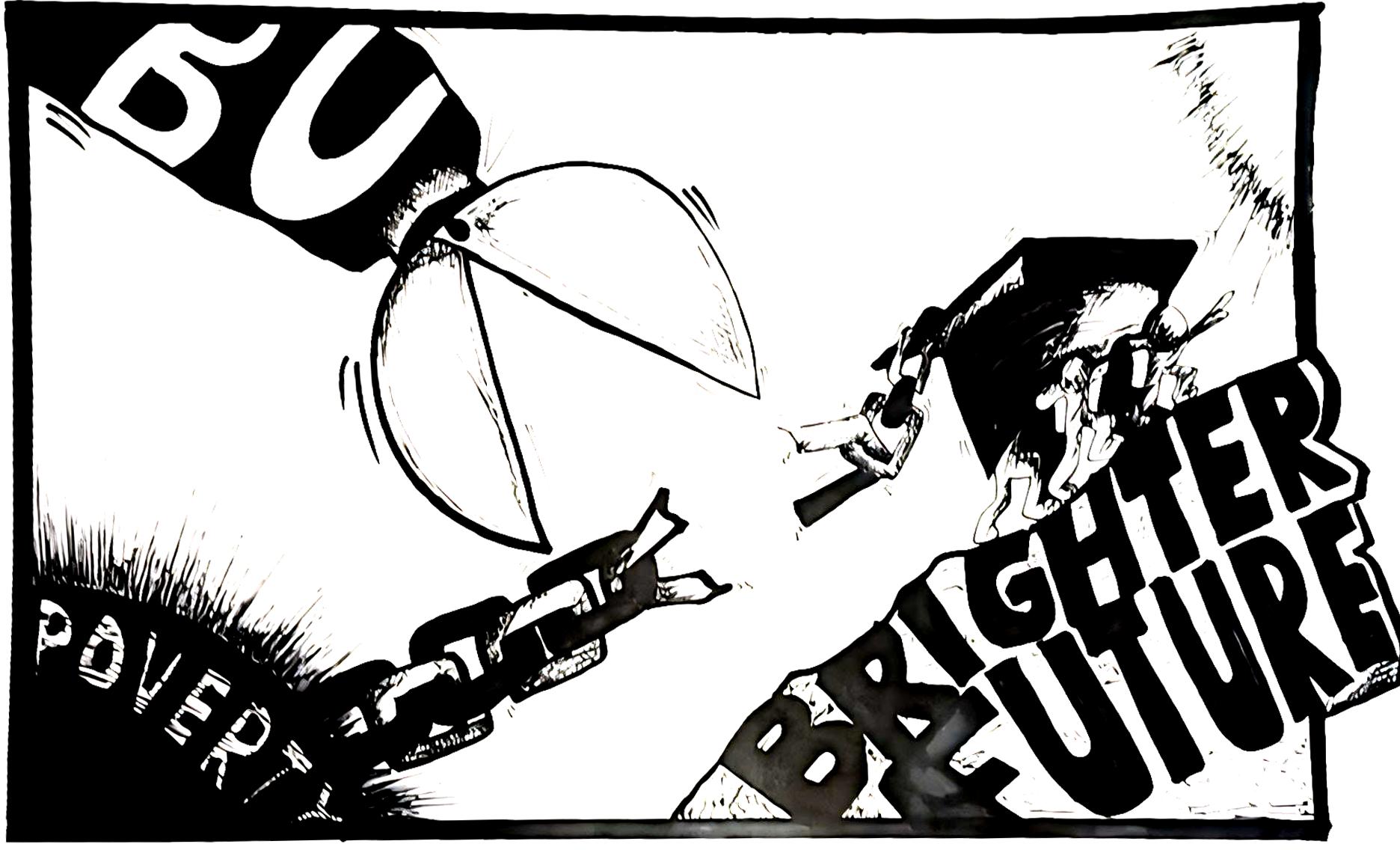
It was not what I was expecting when I first thought of “wow, BU”. It’s just a normal university, it is not the thing that people think it is
PROMPT: and now?
BU is my second home. However, home is not just all about positivity and happiness. As someone coming from another place, I had no choice but to make BU my home. The system is not as perfect or as organized as it may seem. Teachers are high-caliber, but not as much as we’ve expected. Slowly but surely, I still have confidence that BU will teach me lots of great things.


ESTELLE P. DOROSAN
Conflict. A seven-lettered word with far-reaching implications, distressingly ingrained in the backdrop of Palestine-Israel for decades. No party remains untouched by its poison, including the education sector and its principal recipients: the students. Ever since its birth as a modern state in 1948, Israel’s relations with Palestine have become a deeply convoluted knot that weaves through historical and religious fabrics, continuing into today’s fraught geopolitics. On either side of the argument, innocent civilians and notably, the younger generation - the students - are facing the unflinching tremors of this drawn-out dispute.
According to the Save the Children Organization, more than 1.2 million Palestinian students have been affected in the past decade, whether through the demolition of their schools, school journey-related security incidents, or physical violence on school premises. Additionally, schools have faced severe physical damage, ranging from partial to total destruction, thus halting educational activities. This alarming statistic often remains overshadowed in the louder dialogues of peace negotiations, treaties, and global alliances.
Understandably, the physical damage to schools and academic facilities brings education to a halt. Nevertheless, the struggle is not limited to bombed school walls or dangerous journeys to schools; it extends to living under occupation. Students have to battle persistent uncertainty and fear while simultaneously shouldering their academic obligations, resulting in many experiencing adverse effects on their learning capabilities, comprehension skills, and mental wellbeing.
The constant shelling and ongoing conflict dramatically impact students in this region. Forced evictions, physical attacks, and arbitrary detentions hinder their academic progress. With Israeli authorities’ efforts to shift the Palestinian school curriculum in East Jerusalem, there is also the erasure of cultural identity to contend with. Additionally, traumatic incidents adversely affect students’ psychological health, significantly influencing their learning capacity.
Perhaps less apparent but equally disturbing are the incalculable
psychological and emotional costs of this conflict. Imagine a generation of children growing up amidst chaos and constant fear, witnessing the gruesome sights of death, destruction, and deep despair, robbing them of their childhood. It is fair to say that this tense environment influences students’ performance and aspirations.
Palestinian students studying in Israel’s academic institutions are not immune to this discord either. Many of these students are grappling with a hostile educational environment. Cases of prejudice, discrimination, and marginalization create a breeding ground for polarization among students, straining the socio-cultural fabric of the nation further.
The curfews and checkpoints established by the Israeli government hinder the safe passage of students, thus jeopardizing their regular school attendance. These conditions dramatically amplify students’ drop-out rates, hinder social progress, and suppress Palestine’s economic growth, fostering an unfortunate loop of reduced opportunities, limited access to higher education, and compromised future potential.
This is gravely unsettling that children’s right to education, an irrefutable universal human right, becomes subject to territorial conflicts and power dynamics. As Nelson Mandela wisely pointed out, education is a potent tool for societal transformation. The impact of the Palestine-Israel conflict on students not only impedes their growth but could also stall socio-political reform in the region.
The conflict undeniably reshapes students’ educational experience and
compromises their fundamental right to knowledge and learning. A swift and sustainable resolution to the PalestineIsrael conflict is crucial for empowering students to effectively participate in societal and economic progress.
Reflecting upon this unresolved crisis, there is a sincere hope for a harmonious future that transcends boundaries and nurtures students, irrespective of nationality or religion. Their voices must be heard; their dreams should not crumble under the burden of conflict. It is a shared responsibility to advocate for policies that provide Palestinian and Israeli students with the stable and secure platform they need to thrive. Let the collective support rally behind these promising scholars, giving them the chance they deserve—a chance that echoes hope rather than the echoes of conflict.
A swift and sustainable resolution to the PalestineIsrael conflict is crucial for empowering students to effectively participate in societal and economic progress ”
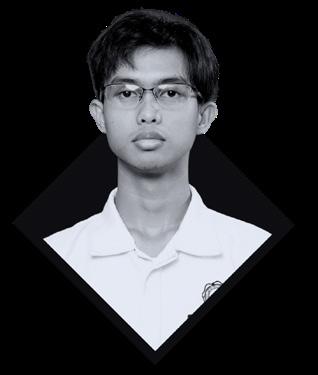
 FITZ REYNALD A. BACOLOD
FITZ REYNALD A. BACOLOD
If it is a new era for the Philippines and a new image for their clan that President Marcos is offering on the table, jailing former President Duterte should be a start to make that true.
A new Philippine society being advertised by the current administration is undoubtedly an attractive idea considering what the country has gone through during these past few years.
Issues outside and within the government itself are rampant and normalized to the extent that politicians cannot fit inside the shame box anymore. Sadly enough, this type of governance is what locks the spines of every Filipino to bow down in poverty. And even more unfortunate is that no one is being held accountable for it— not even those who murdered many with their power.
Just from the past administration’s governance, countless alarming cases of murder and killings came into controversy as former President Rodrigo Duterte’s war on drugs campaign hunted innocents.
The International Criminal Court’s Office reported the brutality accumulating 12,000 to 30,000 deaths, including minors. This campaign was also utilized in order to silence Duterte’s critics such as former senator Leila Delimma and others.
Such twisted governance went to an extent where the International Criminal Court raised its fingers toward Duterte.
Despite being behind a few years back, the former President cut ties with the ICC in 2019 in an attempt to dodge the jurisdiction of the court. But even with the international ruling of his War on Drugs campaign being valid, disguised as a radical solution to drug problems, the former president was able to step down from the highest seat as if he did not stain it red.
This kind of injustice and abuse of power
by government officials is what the “Bagong Lipunan’’ talk should be about.
No one could say otherwise because 30,000 dead bodies is not something to be ignored right after Duterte’s term. Now that Duterte is legally vulnerable within the streets of Davao City, PBBM has the odds in supporting the ICC’s probe into Duterte’s case. Or if that does not work, then perhaps a little bit of wish-granting for Duterte to be judged by a local court can take place.
And to give Junior the benefit of doubt, this is a free ticket to bleaching off the Marcos’ names. If it really is a “bagong Pilipinas, bagong Mukha” now, then he should at least exert an effort in drawing a fine line between himself and the country’s former dictator, Ferdinand Marcos. And there is not a single situation that would spoon-feed him more than actually condemning heavy mass murders and violence.
Every Filipino already expects false promises every election, but this branding of the administration to actually offer real changes is too powerful to put to waste. We cannot afford anymore to normalize such patterns, and so be it with the youth to actually witness firm stances on words. Because in return, they would actually have a standard set in place for future political candidates.
This is nothing like a criticism, but a call for the president to stand firm with what’s new. As a Filipino citizen who will soon grow up as an educated voter, I can only know for a fact that PBBM’s next steps are uncertain. But just a thing that can be assured, some of us are through with the untrues.
We cannot afford anymore to normalize such patterns, and so be it with the youth to actually witness firm stances on words ”

MILES ANGELO M. ESPINAS
All members of the Philippine Senate rejected the House of Representatives’ bid for Charter Change through Manifesto signed by 24 senators last January 23, 2024. The House will utilize the People’s Initiative to execute reforms in the constitution’s structure. Several backlash, economic, and political concerns were raised because of suspicious and questionable steps to push the said campaign.
Charter Change was discussed by House Speaker Representative Martin Romualdez during his speech, having the idea that the Congress must conduct voting jointly, and push reform to improve the economic status of the country. The amendment will happen if only 12% of the country’s registered voters signed the petition. Signatures are being gathered by proponents for it to be effective and have a stronger leg to stand on. But are we prepared to face the consequences of our actions? How are we certain enough that we are not putting ourselves on the edge of a cliff?
“Not Worth It,” Senator Risa Hontiveros said.
According to her, there are multiple aspects that must be prioritized first, before anything else. Amending the constitution will allow it to be subjected
to changes that will lead to abuse of power.
Politically, it shortens the President and Vice President’s period of office for only five years; however, they will be allowed to run again for another term. It will also eliminate constitutional restrictions to international ownership of land and corporations within the country. Foreign domination of industry will eventually result in monopoly and create an economic hierarchy where Filipinos find it difficult to compete against international businesses, markets, and production. Moreover, there are accusations of unlawful practices such as bribery wherein cash is offered to get signatures in return.
While the Senate experiences the threat of being eliminated from the quotient, the House representatives guarantee that they shall focus only on economic
JUSTIN ENAJE SALVATIERRAThis may have been about how Luka disrespected Jesus and His prayer, but it also has everything to do with drag and gender ”
Drag, despite having been a symbol of celebration throughout queer history, has been vehemently fetishized by Western media into either meaningless parodies or overtly sexual performances. With this ingrained in the minds of Filipinos, the witch hunt against Pura Luka Vega sets a scary precedent that further justifies the scandalous affair between the Church and State.
In a Facebook post addressed to Pura Luka Vega, Kim Atienza writes “I sincerely hope you develop the empathy to know how deeply offensive your ‘art’ is to [the] majority of Filipinos.” ‘Art’ was in reference to a circulating video of Luka dressed as Jesus Christ in drag as a punk rock edit of Ama Namin, a religious song, plays on stage. They had been arrested twice ever since.
“This has nothing to do with drag or gender but how you disrespected Jesus and His prayer we so revere”, Atienza spells out. However, despite his sentiments, this has everything to do with gender.
Drag isn’t ridicule. Like every other performance art, drag is just another medium. But its primarily queer populace has led Catholic groups, who have historically shown hostility against the LGBTQ+, to antagonize the art form itself. There will always be a distaste for dressing up as religious figures, but not to the extent as how people did with Luka’s case because it is not in the programming of Filipinos to understand that religion and
queerness can exist together in the same space unless they are in direct opposition to one another. A queer? Praying? He must be defiling our Lord.
Comically alluding to religious imagery isn’t new. Luka wasn’t the first to use the remix; it existed long before the controversial video. Facebook videos as early as May 2020 are still up for viewing, archiving the notoriety of the joke and how little any organization did compared to now. Goin’ Bulilit dressed up child actors as Christ for a gag, and former President Rodrigo himself bad-mouthed Catholics; no attempts of persecution transpired in those cases.
The enforcement of the law is inconsistent. The same people who allowed the adamant persecution of the drag performer are the same politicians who have gone on broadcast television to defend a “fair trial” for the alleged predator and human trafficker, Apollo Quiboloy. The government’s tendency to protect powerful individuals is a song Filipinos know the melody enough to sing with heart. However, their tendency to
favor Catholic individuals and needs is so familiar that we don’t even bat an eye whenever it happens.
The use of the phrase your art to refer to drag alienates queer communities from the majority of Filipinos which the law should aim to protect. Queer Filipinos have been forced to understand that it is fine for religious organizations to call them the vilest and most dehumanizing names. Yet, no one urges those organizations to, for once, develop the empathy they demand.
This may have been about how Luka disrespected Jesus and His prayer, but it also has everything to do with drag and gender. The revisal of Article 133 and the secularization of the law is not a scheme to strip religion of its rights but a protection for vulnerable minorities, especially in a nation where the vast majority of the people believe that being queer is as much a crime as committing murder.
Luka in an interview with Rappler says, “For countless of times, as a queer person, I’ve had people use the bible as a weapon against us. And now we have laws that are used, same thing, as weapons against us”.

COURTESY | BEN NABONG Drag performer Pura Luka Vega smiles through detention bars, October 5, 2023. Luka has been arrested twice and declared persona non grata in seventeen localities.

The prevalence of seniors engaging in romantic relationships with junior high school students raises alarming concerns about the perpetuation of predatory culture. It is morally unacceptable for high schools to pursue relationships with students significantly younger than themselves during such formative years.
revisions. According to them, they do not have the intention to abolish the Senate as it plays a crucial role in the government.
However, there is nothing wrong with undergoing critical analysis first before taking it into consideration to unfold possible hidden agendas within charter change and ensure that revisions will only surround the economic aspect of the country.
Our Constitution is not for sale, stop deceiving the Filipino people. It is disappointing that some can literally give up their own rights and future in exchange for a peso bill which high-ranking individuals are taking advantage of. Think thrice, for incompetent decisions will only put the country trapped in a dead-end situation. If that happens, 24 senators will easily be outnumbered by 316 congressmen. Furthermore, the Philippine local businesses struggle to compete in the market and industry, so why remove restrictions on foreign ownership? One wrong step will cause abuse of political power. Do not let history repeat itself.
The amendment will happen if only 12% of the country’s registered voters signed the petition--- Politically, it shortens the President and Vice President’s period of office for only five years; however, they will be allowed to run again for another term ”
When people defend these relationships, they often bring up examples of large age gaps in the past like their 17-year-old mother getting married to their 30-yearold dad. While that’s the truth, we’ve got to draw the line between consenting adults and situations where one person is still a minor. It’s quite the same game when a senior going 18 dates a freshman, who could be as young as twelve, which is four years younger than the consenting age in the Philippines.
In Republic Act 11648, signed by Former President Rodrigo Duterte, engaging in sexual activity with a person under 16 is illegal, with exceptions for teenage couples within a three-year age gap. However, the act of “grooming,” involving subtle behavior to establish an emotional connection with a minor for sexual manipulation, is often overlooked by simply putting the word “consensual.”
Without a tough watch on the concept of grooming, minors remain vulnerable to exploitation.
Despite having the classic argument that as long as intentions are clear it should be permitted, their maturity levels and life experiences are undeniably worlds apart.
As the relationship progresses, the older one maintains a romantic bond with a minor who lacks the capacity to provide informed consent.
Even if they’ve been friends or knew each other, it doesn’t erase the power imbalance or potential for manipulation.
The fallout from these relationships goes beyond just those involved – it feeds
into a culture where sexual assault and coercion are brushed off. By turning a blind eye, we’re letting predatory culture thrive and leaving the most vulnerable without a voice.
Furthermore, we need to have those tough conversations and challenge the status quo around seniors dating younger students. As there is a certain clout for students who have pulled someone not in their grade, when news of the older one doing something that crosses the boundary of a relationship, the victims are still plausibly shamed by their peers.
These relationships leave a mark, and not in a good way. The emotional and psychological toll on the junior can be significant, affecting their self-esteem on future relationships. We can’t look the other way at the harm being done in the name of so-called romance – it’s just not worth it.
It’s only by holding ourselves accountable and pushing for better behavior that we can create a safer and fairer environment for everyone. It might be uncomfortable to talk about, but we need to have these conversations to protect juniors from being taken advantage of.
These gaps are called “gaps” for a reason. Let’s prioritize the well-being of our youth and speak out against exploitation wherever we see it. Remember, in student relationships with significant age gaps, one party often holds obvious power. And when it comes to supporting these relationships, it just doesn’t age well.
It might be uncomfortable to talk about, but we need to have these conversations to protect juniors from being taken advantage of ”
Ever since the implementation of the K-12 program in the Philippines, strand discrimination has become a pressing issue among schools nationwide. Bicol University College of Education Integrated Laboratory School - High School (BUCEILS-HS) is no exception to these institutions; many BUeños have reported experiencing first-hand strand discrimination within the school. These cases raise concerns about the welfare of the student body and, ultimately, the kind future that is being shaped for these students.
Following Bicol University’s high school system reform last 2021, BUCEILSHS now only offers two academic strands for the senior high school level: Science, Technology, Engineering, and Mathematics (STEM) and Humanities and Social Sciences (HUMSS). This change has produced many benefits for the institution, such as strengthened learning competencies and more extracurricular opportunities. However, this revamp may have also amplified some strand-related discourse all over the campus, wherein many cases cross the threshold of being discriminatory.
Craving HUMANity
Strand-based discrimination within Bicol University has long existed even before the high school system was reformed. However, after the implementation of the Senior High Admission Test (SHAT), which is the university’s new qualifying exam for the senior high school level, debates about senior high school strands have become more rampant and tense, ultimately affecting the decision-making of students who are set to take the SHAT.
Scott, a Grade 11-HUMSS student, shared that he had already decided on choosing HUMSS for the qualifying exam, but a fellow of his advised him to choose STEM instead because of its advantage for college admissions.
“This person said that I should pick the STEM strand since they say that this

strand is heavily prioritized in college entrance exams,” Scott shared. Nicole, a Grade 12-HUMSS student, had friends who shared the same sentiment as that of Scott’s. They told her that STEM was usually more valued by schools because of the strand’s science and math centered curriculum.
Additionally, they shared that STEM subjects are “smarter” in general.
In contrast, HUMSS does not offer the courses that are socially and systematically esteemed. This, in turn, makes it harder for students like her who wish to pursue HUMSS to stride into the path they desire.
“For me, personally, parang nakakadown ‘yun… nakakapanghina ng loob as a student kasi parang it also makes me doubt my abilities na parang, ah, HUMSS lang ako, hanggang dito lang ‘yung kaya ko,” Nicole expressed.
STEMming from Pressure
However, despite being held to a standard of excellence, STEM students are also affected negatively by these debates in question. Ironically, the image these students are being praised for turns out to be of significant damage to their scholastic experiences.
Students of the STEM strand seem to be up a gum tree primarily because of the constructed stereotypes and expectations on their academic strand. The milliondollar statement “Nasa STEM ka, ‘di ba? Dapat alam mo na ‘yan,” is a daily
While Buckingham Palace may boast its famed corgis and The White House flaunts its turkeys, here at BUCEILS-HS, nothing rivals the comfort and joy brought by a feline’s company.
As soon as one steps into the school, they find themselves captivated by the graceful strides of a cat called by many as Buri the Cat. Her majestic fur, adorned with a tint of orange and ivory, stands out against the backdrop of bustling corridors and busy halls. With each elegant leap and gentle purr, she finds her way into the hearts and lives of the students, serving as the unofficial mascot of the high school.
But she is more than a pretty face; she is an icon, a mother, and most importantly, a good friend. As iconic as she may be, no one knows her origins. Even the Unit Head, Ms. Teresa M. Abainza, says that Buri the Cat has been part of the school longer than anyone else. In spite of that, people from all walks of life find solace in the presence of this little furball friend. Whether it’s a quick snuggle between classes or a few sights of cuteness as she roams the school, Buri the Cat never fails to be a beacon of comfort—a bringer of peace in a student’s busy life.
Whether they’re grappling with academic pressures or personal struggles, students find comfort in Buri’s warm presence and unwavering love for all. Her mere presence serves as a reminder to pause, breathe, and appreciate the simple joys of life, even amidst the chaos of high school life.
But as they say, every story has an end, and unfortunately, the end of Buri the Cat’s story in BUCEILS-HS may come sooner than we expect. Buri the Cat is a stray cat, and concerns have been raised by several accrediting bodies, such as the Accrediting Agency of Chartered Colleges and Universities in the Philippines (AACCUP) and the International Standardization Organization (ISO),
about the safety and security of having her roam the school grounds. Due to a lack of vaccines, immunization shots, and anti-rabies shots, driven by the severe lack of funds, the school has been seen unfit as a home for our furry friend.
Buri is now temporarily sheltered in Tabaco Animal Rescue and Adoption (TAARA) and will be permanently harbored in Sorsogon Animal Rescue and Adoption (SARA). In a Facebook post, the BU Animal Welfare Society says that in the shelter, Buri would receive the best care possible. However, many students are still saddened by the cat’s sudden departure and expressed concerns over her well-being.
“I used to bring cat food for Buri every now and then. The day after I fed her, she sat by my feet and slept. It’s still upsetting for the students that she’s leaving, but given that it’s for Buri’s well-being, I think that they’re all okay with it. The concern with shelters though, especially the one that Buri was put into, is that they rely on donations for their funds. It is slightly worrying, but we trust that the shelter will take good care of her. Plus, if ever she gets adopted, we know that they will pick the best-suited fur parent for our beloved Buri,” says Emmanuelle Joy Batac, a BUCEILS-HS student and one of Buri’s closest ‘hooman; companions.
No matter where Buri maybe now, the students of BUCEILS-HS will always fondly remember the moments they shared with the feline. After all, stray animals deserve just as much love as other house pets. Whether it’s her sudden jumps on the lap or her random frolics in the hallway, Buri is proof of how a little critter can mean so much to a community and how a furry friend can feel like family.
reminder for them to be cautious and gain spectacular achievements despite their own struggles in figuring their way in the academe.
As the name implies, the strand focuses on science and mathematics concepts, garnering students under this the title of being the “smarter” ones. As Jim, a grade 11-HUMSS student, stated, students of the STEM strand are depicted as math wizards who are good at solving mathematical problems.
This perception has led to STEM students having difficulty communicating their own hardships. Gletine of 11-STEM shared how their struggles are often overlooked because they are under the said strand.
“Since we are considered STEM, our struggles in processing information are typically unseen just because we’re STEM students. Many give us less help just because we’re ‘STEM’ and are ‘smarter’.”
Additionally, because of this fixed science-and-math-esque image, many STEM students feel like they are being restricted from exploring things that do not entirely focus on their strand’s disciplines.
Gwyneth, a Grade 11-STEM student, shared that she was discouraged from pursuing her interests that are not STEMcentered because of the stereotypes that came along with her strand.
“[They meant that] because I was a STEM student… I should just stick to Science and Math. That experience really discouraged me from pursuing public speaking and writing because of the stereotypes imposed on me just because of my strand,” Gwyneth shared.
Opportunities: The Abundance and Lack thereof
Although much of the conflict involves the student body, others say that one of its major causes may also have to do something with the systemic setup in the Philippines.
Trisha, a Grade 12-HUMSS student, feels that there are not as many opportunities and resources offered to HUMSS students as opposed to other strands.
“Madalas… naga-stem lang naman ‘yung discrimination na ‘to sa opportunities na natatanggap ng bawat strand…. feel ko need natin ‘yun baguhin. Dapat equal ‘yung opportunities para hindi isipin ng mga student na mas superior ‘yung [specific] strand… lalo na ‘yung sa HUMSS, sobrang limited ng opportunities,” Trisha expressed.
Albeit speaking for the other side, Kay, a Grade 12-STEM student, agreed and felt that they are presented with more opportunities because of their strand. She further stated that the abundance of these very opportunities also amplify the issue at hand.
“I think na maybe this [issue] is rooted from instances when some strands get an edge sa… academic things like scholarships et cetera, like minsan mas pabor or mas priority ang ibang strand, especially [those that are] sciencerelated,” Kay expounded.
Problem-Solving
Strand discrimination is embedded in how society expects individuals to act and behave according to socially assigned roles. It has primarily affected the educational institution and will later on influence the overall community. Students may have difficulties in attaining holistic development if this dilemma is not addressed. As their response, they have been calling for action, arguing that
fairness and equality in opportunities and treatment is a right and not a privilege that people link according to the student’s SHS strand.
Eunice of Grade 12 - HUMSS highlighted the part of school administrations in combating this problem.
“It is important to address the preconceptions we have on the way we view people’s intelligence and abilities. We must acknowledge the fact that everyone can be intelligent and skilled in different ways. Additionally, school administrations and educational institutions must see to it that students support other peers and strictly enforce rules and regulations against strand discrimination. One strand does not have to be inferior to another and every student, regardless of their strand, must be treated with equal respect.”
Additionally, Trisha suggested conducting an activity wherein students from both SHS strands of BUCEILS-HS will be the participants.
“In that way, maa-appreciate nung students ‘yung diverse skills na mayroon ‘yung bawat isa tapos mare-realize nila na lahat ng strand may silbi sa society… hindi lang ‘yung mahihirap na strands ‘yung significant… mas pahahalagahan din nila ‘yung iba pang strand.”
Voices from those who biased and oppressed specific strands caused turmoil in their mindset and performance. Students, most especially from senior highschool, have been open in suggesting implementations and actions to alleviate strand shaming and discrimination. Since “the youth is the hope of the nation” according to Rizal, they believe that fair and just treatment will help them achieve their dreams and the shared goals of the society.

KATE DELA PENA
Welcome to Bicol University, where learning commences in a melting pot of cultures, and greatness hails from every nook and cranny of the region.
For a chance at quality education, many students transfer to Bicol University College of Education Integrated Laboratory School – High School Department (BUCEILS-HS) from faraway places, such as Sorsogon, Masbate, Polangui, and the like – even staying at boarding houses to avoid the inefficiency of going back and forth.
Naturally, coming from a different hometown will come with a difference in language. The Philippines houses anywhere from 120 to 187 languages, each with its own set of dialects. With Bicol, the local dialect, there are up to 12 dialects.
Difficulties in Diversity
Fitz Reynald Bacolod of 12- HUMSS is one example. He transferred here all the way from Milagros, Masbate, and uses the Masbateño or Minasbate Language.
When he first arrived, the barrier made him ‘feel intimidated’ as the thought of others having to adjust for him as it ‘feels like I’m [Bacolod] forcing them to make an effort into speaking a language that they don’t usually use, which is Filipino.’
Shell, nicknamed as such for privacy, hails from Barcelona, Sorsogon, and uses Sorsoganon. They noticed that compared to Bicol, Sorsoganon’s intonation is much slower and calmer – they can comprehend deeper Bicol words thanks
to its similarities with the latter, however, its tone affects how Shell interprets it.
When Shell first arrived, they found no difficulty adjusting to the lessons as Filipino and English were mainly used. However, what they did find difficult was talking to their peers, as they would often use Bicol outside of classes.
Found in Translation
According to Bacolod, he found that his belief of making others adjust to him was untrue, as his Bicolano counterparts didn’t mind using Filipino at all.
“I was also able to appreciate my own language even more in a way that engaging with people who I do not share a language with, made me realize my own identity as a Masbateño and how that played a vital role in my development as a person,” he stated.
He also realized that since Masbate is still a part of Bicol, he had no need to fear interacting with peers from the mainland.
For Shell, their ‘conyo skills were put to the test, as ‘the frequent code-switching lets us express ourselves better, and it also ensures the fact that we’re [Shell] properly understood by the receiver.’
Dreams Fuel Discoveries
“I personally did not plan to study at
BUCEILS-HS, but fortunately I was able to pass the SHAT and decided that I did not want to miss that opportunity,” said Bacolod.
He stated that he also wanted to try new things outside of his comfort zone by going somewhere unfamiliar for personal growth.
“I did it for the plot, no matter how cringe that sounds,” noted Shell, “I wanted to experience a new environment, go to a school where no one knows me, and stuff like that in order to challenge myself in a way.”
When asked if they would still study at BUCEILS-HS even after experiencing the language barrier, Bacolod said yes, as he found the people here to be very inclusive in regard to people coming from different provinces.
“I believe that even though there’s the existence of language barriers, we still get through it, we still find ways to eventually communicate,” said Shell.
To reach success, students embark on a voyage to find a better future. Yet, the path they take is not one they face alone. The experiences of students in BUCEILS-HS, especially those in senior high school, show that one may end up finding themselves through exposure to other perspectives. No matter how scary it might be to leave your hometown’s sweet comfort zone, there is much more growth when you go from the pond out into the ocean.

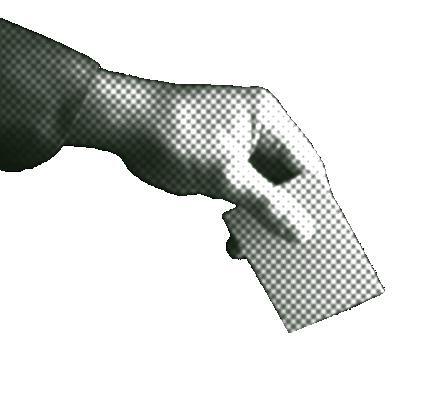
“All is for the best in all of possible worlds,” is a mindset planted to each voter, a seedling of hope ingrained in the youth’s path to cultivation. In line with the upcoming Midterm Elections this 2025, COMELEC calls for the youth to participate through registration by September 30, 2024 granting them the right to vote for the country’s future. This calls for a new set of public servants, chosen by their people to dedicate their time to advance the Philippines' prog ress and achieve stability.
BU East Campus Gymnasium was deemed a success under the leadership of BU President Dr. Baby Boy Benjamin Nebres III for raising the total newly registered voters to 2,962. A feat achieved for the cause of change, opening their doors for not only BUeños but for the public to finally set foot within the realm of politics
promise.
Reality tends to bend according to how one wishes to perceive it, at times it’s full of optimism and trust. A paradise where a person cultivates their garden, in this context the Elections. More often than not, even experienced voters tend to follow the trance of bandwagon. The ability to persuade a person through soft power, through the means of charms, singing, and dancing. A performance that pitifully happens to be a one-time-show.
This births the conflict of disappointment.
Upon receiving the title these newly elected leaders close their ears to the cries of their people. It is an unending cycle where people are told that what they offer is the best of all possible worlds only to fizzle out once seated in their desired position.
One must be reminded as to why Midterm Elections are held, Edenic voters, naive and untainted to the reality of politics will be thrusted upon a fantasy only to shred it later on.
A resolution can be offered for these voters, where they must cultivate their own garden. Knowledge bears fruits to those who wield them correctly. With months to spare, these aspiring voters will be given time to gather information about the running candidate’s platforms and past projects to give context to their cause. This will also allow them to profile and choose a person whom they believe is worthy to lead and govern the people.
Fate couldn’t agree more when
COMELEC V launched BU KUGOS
COMELEC: Special Satellite and Register
Anywhere Project (SSARAP). Inviting these Edenic voters to a dual-purpose program aiming to hold a registration fair and an education seminar for voters. Utilizing the opportunity of not only planting a seedling of change but nurturing these minds into a responsible citizen involving themselves in the democratic process.
A fraction of a percent in the total amount of voters is still a percent to count for the country’s inevitable transformation. It is not enough to grant these people the ability to vote, it is still crucial for them to be knowledgeable to choose who they believe could bring prosperous progress within the community.
The two-day program held last February 19-20, 2024 at

For the Edenic voters, yet to be and are now recognized— you are now bestowed the prowess of change. It is not the politician who wears the laurel wreath but the public upon seating the right and just leader. A true victor for the masses, one who listens to their people and is no different from the humble, common man you meet. The ultimate good will be pursued through accessed knowledge and freedom to express who it is through the correct means under the eyes of the law.
The ability to discern your victor by knowing them through their societal contributions, achievements, platforms, and true goals is knowledge that cannot be bought and that is held strong by one’s principles amongst the sea of unjust cuts and processes. A true invaluable ability that must be wielded by both Edenic and experienced voters alike. With the upcoming chance to prove this, it is advisable to play your role in courtship by truly uncovering the thorns beneath the velvet blossoms offered each electoral season.
Midterm Elections after all are held to cleanse and renew a slate, to test the first batch of electoral winners if their triumphs extended past presidential elections.
Candide Minded voters, those who firmly believe and brought up to be faithful to what is given at all times must act and think in practicality. For not all that is presented is a supple apple from the garden itself. Three million voters may be a minority, but it is a start to rid of what is deemed to be holding back progress and promote a brighter future.
Change is what everyone wants however, no godly prayer or miracle can grant this. It is only through human intervention that progress will finally occur. The youth is believed to be the future, often belittled but knowledgeable enough to bear compassion and sympathy to those in need of it. The upcoming elections will serve as a test, a challenge to what these newcomers believe in. As an Edenic voter, yet to
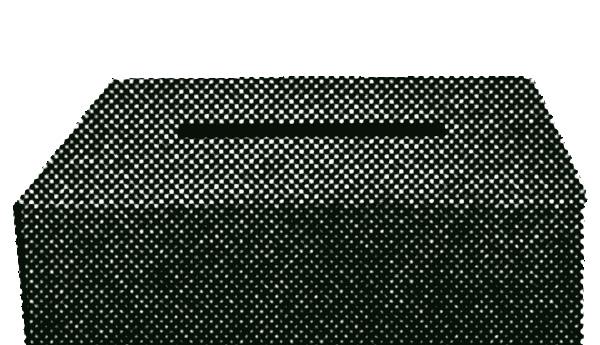





When IV of Spades first released ‘Where Have You Been My Disco?’ back in 2017, they told the world to “revive the old, make it new” – signalling an emerging era of young people searching for themselves and finding comfort in music from decades long gone.


The long road to living “I only did this [working] recently, but I really want to become a fireman one day, " Choco expressed. As he waved goodbye with one hand in the air and a bag of donuts in the other, a deep sense of dread filled us. He would have been in Grade 4 if he continued his schooling. For some children, they do not live to see the quality of their life improve nor the path to realize their goals. The roads are long and so are the days they spend earning to feed them and their families. We cannot always shield them from a society that often wants to use them, but this is all the more reason to try. Children shouldn’t work on the streets, but on their dreams. They should worry not just about surviving, but about living the best lives they can too. At the end of the day, each and every child matters, whether it’s the ones inside the classrooms or on the streets like Choco – the little jeepney barker today who still hopes of becoming a fireman in all his coming tomorrows.
In that point of time however, I don’t think anyone could have predicted that their music would open the gateways of nostalgia for an entire generation even years after the band went inactive. More so, that it would find its way to the hearts of people both in big city circuits and small town scenes. That is precisely how I found myself in an old house-like cafe along a busy street in Legazpi listening to my favorite songs by IV of Spades covered by local performers.
Gigs like these are part of the Coteng Series organized by Coteng, a tight-knit collective dedicated to curating intimate cafe gigs, and hosting local art fairs.They operate as a branch of the Children of the Mist Records and Productions, one of the most popular record labels in town and the home of Bicolano indie music. The outfit has previously held other artist-themed sessions, covering the likes of Taylor Swift and The Beatles. These events help up-and-coming performers find their audience by taking something popular and familiar and allowing them to put their own spin on it.
Funky tunes, fresh faces
For young performers, spaces like these are an avenue for growth and discovery. Still, it can be terrifying to dive into the music scene with people who have probably attended gigs together for years. This echoes what newcomers crosant felt, having only performed at school events.
Crosant is composed of Grade 11 students Hector Jaucian, Jian Barrios, Raj Miraflor, Khoebe Ginez, Christian Arana, and Ian Callos. The group first became friends during their junior high school days in Bicol University High School.
They say it’s because of the uniqueness of bands like Green Day, IV of Spades, and Kamikazee that they found a liking for alternative and indie rock. This gig marks their first step as performers inspired by the ones that came before them.
“Our passion for music and having fun as a band inspired us to keep performing together and to finally take on gigs like this.
We were excited and nervous because it was the very first time that we performed in front of people we didn’t know,” the
band shares. “Pero sabi namin, ‘Enjoy lang natin, tripping lang.’”
Joshua Andrei Morales from Legazpi City Science High School and bassist of The Illad, says that even if the band is often busy with school and other commitments, performing has become a part of their lifestyle. They only do covers for now, but they plan to branch out and make originals in the future.
“We do (gigs) as a stress reliever. Performing is where we have fun and express our current feelings through music,” Morales says.
Gems of the local gig scene
The gig culture in Legazpi is almost like a character itself, alive and breathing. What’s truly special about the intimate cafe gigs here in the province is that even though our favorite performers from Manila and abroad only come and visit once in a blue moon, we have a plethora of new talents right here at home.
“Each gig is a whole lot of fun because you really see how the fans of local artists come together. There’s always something to look forward to because the company is solid,” says Jule Haspela, a Grade 10 student at St. Agnes Academy and an avid performer at gigs around Legazpi.
With the caffeine still kicking in, my friends and I went home that rainy night running under one umbrella. We will never again be as young as we were in that moment. We hummed along to the songs long after the music faded into the distance. With an assortment of random merch in my bag and a new playlist of songs in my head, my wallet might have been empty but my heart was full.
This community of artists supporting their fellow artists has been thriving since even before we were born. Now, it’s our generation’s time to keep it alive – on our own terms, in our own ways, and with our own sound and style. As IV of Spades is currently on hiatus from creating songs while other icons may no longer be with us anymore, there are plenty of Legazpeño and Bicolano youth carrying on their legacy and most importantly, making their own kind of music.

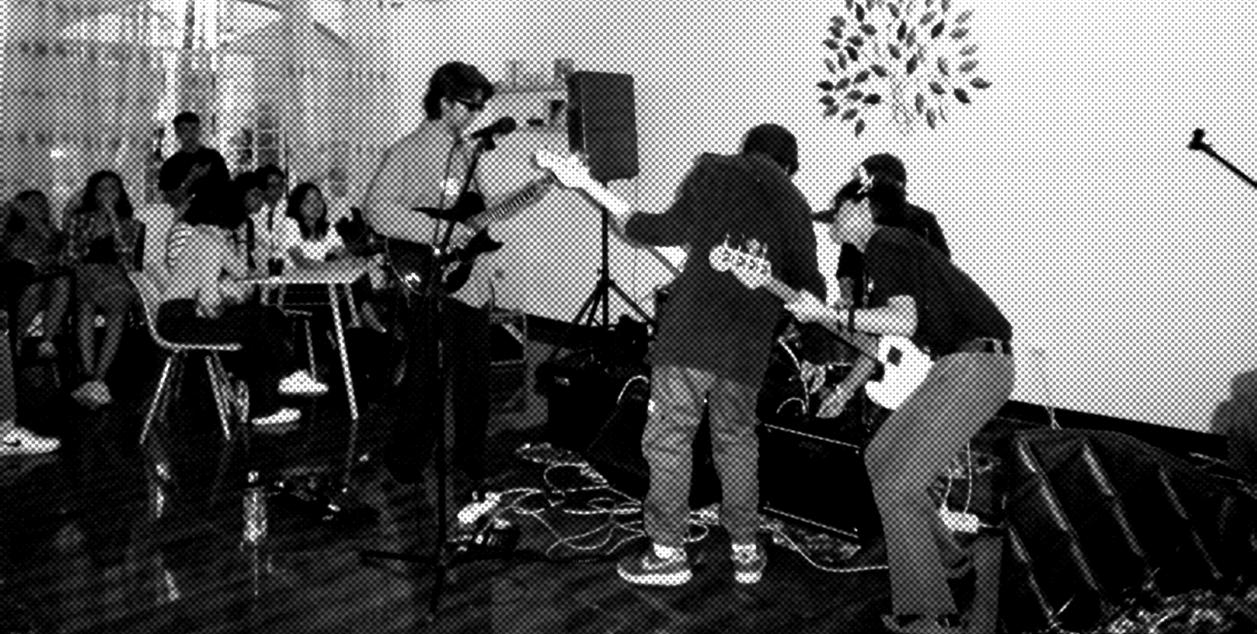

 JUSTIN ENAJE SALVATIERRA
JUSTIN ENAJE SALVATIERRA
The Metro Manila Film Festival (MMFF) once housed the greats. But long dead are the forges who sculpted the very foundations that held Philippine cinema up to its potential. The marquees that donned the fruits of passion and verve now kneel to the echoes of coins as they cascade down the wickets of ticket kiosks. However, after years of tacky films and underappreciated gems, during its 2024 edition, MMFF once again showed signs of life.
Mabuhay ang Pelikulang Pilipino! [Long Live Philippine Cinema!]
Eugene Domingo’s final cry at the climax of Ang Babae sa Septic Tank 3 (2019) shares a similar sentiment as most moviegoers for the 49th annual MMFF. The renowned film festival garnered ₱1.07 billion, the highest ever recorded box office gross of an MMFF, doubling the ₱500 million from its previous year, which itself was a tenfold increase from 2020 (₱50 million). It may seem like the pandemic played a role in the festival’s washout, but its decline has been showing its damage in earnings in years preceding the pandemic.
You see, the MMFF has a focus problem. The project that once was an effort to champion the ingenuity of local directors and writers is now an oblation for already established celebrities who overshadow the works of independent creators.
The billings were always the same names: either Vic or Vice. Not to discredit their contributions to cinema, but the people behind MMFF seem so afraid to let them go.
Among the top 10 highest-grossing films, six are Vice Ganda films, two are Vic Sotto films, and all are lighthearted comedies. The only outlier, on the third rank, would be an adaptation of the Korean film of the same name, Miracle in Cell No. 7 (2019). We would not see another
non-comedy until the 14th rank with the horror film, Feng Shui 2, which not surprisingly stars Coco Martin who already holds a place in three of the top ten films.
They catered to what was already popular. Despite garnering traction from a larger audience, this took away from the essence of MMFF’s conception: a preservation of Philippine cinema, not just the mainstream ones.
It’s difficult not to sound so Letterboxd reviewer and elitist by rooting for the obscure, film-grainy indie film, but indie films really glow when given a chance in the limelight. Take Heneral Luna (2015) and Die Beautiful (2016)— both are beautifully shot, masterfully written, well-executed concepts that were not from the hands of large executives, and yet their quality transcends that of most pre-pandemic MMFF releases.
That being said, MMFF 2023 was different. Alongside the mass appeal from the general public reflected in the titles’ social media presence, the distinct change of faces and narrative set a promising hereafter for Filipino films.
One such distinction had been the choice to forefront Eugene Domingo and Pokwang as the crucial comedy movie with Becky and Badette (2023) by Dir. Jun Lana. Uncharacteristic of previous comedy movies that sought to pocket cash from families looking for a Christmastime

watch, Lana’s work featured adult themes and jokes. Becky and Badette was visually vibrant and vivid, but not in the way that disguised poor writing with flashy colors, but in a way that complemented the fresher themes and dialogues, such as done before in Ten Little Mistresses (2023), without losing what made Filipino comedy what it is.
Gomburza by Dir. Pepe Diokno braces neglected genres back into mainstream media. Rare have box office success and MMFF ever been associated with period pieces and historical dramas as much as they were in Ang Larawan (2017) and Dekada ‘70 (2002) respectively. The film takes the momentum from Heneral Luna (2015) and Goyo (2018), both not entries in MMFF, to heave itself above, bagging its director, cinematography, and production design awards at the festival.
Other notable highlights were Kampon and Mallari, both horror titles, the latter becoming the talk of the town among Filipino horror enthusiasts (and Papa P enjoyers); the returning Vilma-Christopher tandem in When I Met You in Tokyo; the tearjerking storyline of Rewind and Family of Two; and the non-conformist Broken Hearts Trip.
However, among the roster, none smoldered as brightly as the Mayon in Firefly (2023) starring Alessandra De Rossi by Dir. Zig Madamba Dulay after bagging Best Picture. The coming-of-age adventure film travels across various Filipino folklore and pays respect to the sprawling beauty of the countryside. As much as Manila is an interesting setting for films, the yet-uncaptured aesthetic of the probinsya had been well maneuvered to complement the unlikely-friends trope that plucks the heartstrings of any viewer
enticed to watch it.
Philippine cinema may have taken a rest in the years preceding this MMFF, but when the little people often tasked with coffee runs are given administrative power over what is done in front of the camera and said in the boom mics, pelikulas will forever be far from dead.




In the rapidly progressing world of high tech gadgets, fluctuating trends, and alluring gizmos, one thing is certain: what we hold onto is our future. In the vast expanse of products, items, and experiences, what truly makes us whole and happy? Should we fixate on purchasing newer, better things? Or should we hold onto fragments of our past and lapsed joys?
Such is the dilemma of ‘Anik-Anik’ culture, which had recently regained traction in the Philippine cultural sphere. While its prevailing narrative is the perpetuation of hyper-consumerism through gigantic collections and vanity items, there are other interpretations as well. The perception towards ‘Anik-Aniks’ are as vast and varied as the collections they cultivate. But in conversing with a few who partake, are aware, and who actively dislike the practice, there are a few distinct commonalities: it is seen as the collection of old or vintage items, and it is distinctly sentimental. These are the foundations of

“Anything can have value as long as you believe it has value” is the sentiment of Klaire Sevilla, another BUCEILS-HS student. Sporting an impressive collection of mementos that are unlike the curated collections of trade mark collectibles we are used to. Klaire has a box of cherished items, which are assorted in content and random by design.
reminisce of their shared experience with each other. But if such relationships turn sour, it is natural to let go of these items all together, to forget the shared senti ment that is no longer there.
Giving up and discarding items can take another form as Angee Bragais, another BUCEILS-HS student demonstrates.

“Keep things that bring you joy” she says, quoting Marie Kendo. This practice of continually evaluating an item’s worth in considering its disposal is central to Angee’s principles as well. This is encap sulated most with her sentiment towards vintage items: if it is old and withered then it most likely has lost its value.

In tackling the consumerist side of the conversation, the concern over what is wanted and what is needed takes center stage. It is easy to look at vast collections of collectibles as a waste of space and money. Such is the sentiment of BUCEILS-HS Radio Broadcaster Estelle Dorosan. She believes that “Collecting for the sake of collecting doesn’t resonate with my principles of practicality and meaningful living”, choosing instead to focus on the accumulation of experiences that enrich her life. Memories made and emotions felt are more valued by her than
The conscious choice to value experiences over material possessions is indeed a valid perspective on this trend. But what happens if the process of collection itself is an experience?
She believes that it doesn’t matter how much an item is worth or what it is. For her, collecting things she associates happy memories with is the most important. Most encapsulated by her most prized nicknack, a paint cap which gives her memories of her first time purchasing art materials even though she doesn’t call herself an artist. As a collection, these items are like snapshots of memories that she wishes to recall in the future to bring her joy even after its over.
The collections one accumulates throughout their life can spiral out of control, taking up a sizable portion of one’s dwellings. However, none of the people we talked to who partake in ‘Anik-Anik’ collecting would give it up for the world. Never even thinking of throwing away a piece of themselves even for a moment.
However, the few instances one chooses to give up these items are times where they have lost their sentimental value.
Queenie Agripa (another BUCEILS-HS student) holds onto letters from people significant to her life. She likes to
With all of these in mind, ‘Anik-Anik’ culture can be about the grapple between practicality vs sentimentality; consumption vs moderation; preservation vs progress; or possessions and experiences. But I think in the simplest form, to collect is to keep a piece of you as it was and will never be, in your possession forever. This was summed up the most by my mother.
Marcyl Terrell loves snapping photo graphs and keeping old baby clothes of her children. Down to the first strands of hair, to the shoes from their baptism. She knows that these items will never find its use. She takes great pride in maintaining them, as “those who care know how to take care of items.” But above all else, she holds onto the past for future’s sake.
When her and her husband are long retired and frail, she wants fragments of time itself to be observed and to cherish.
A time where children stayed as kids, and when what we once have can never be again.





“I bet there will be flying cars in the future.” There isn’t any, yet. However, technology has evolved well enough that artificial intelligence has birthed its deceitful offspring– deepfake technology. This powerful tool driven by machine learning algorithms has raised major ethical concerns by being a breeding ground for manipulation and disinformation.
Eerily realistic, although entirely fabricated, deepfake technology creates videos and images by seamlessly altering faces and voices. Recently, in January, American singer Taylor Swift fell victim to its adverse aftermath. Obscene deep faked photos of the singer, made by trolls, circulated online, sparking outrage among people and prompting everyone to ponder and criticize the ethics and policies behind AI use.
While it is beyond question that deepfake technology possesses potential for various industries, the negative outcomes simply outweigh its touted benefits.
Artificial Intelligence has found its place in the industry of film and gaming by enabling the creation of immersive and far more realistic experiences while reducing the costs of production. In the 2010 American biographical drama film “The Social Network,” actor Armie Hammer plays both of the Winklevoss Twins, uti-
lizing facial replacement technology. This has undoubtedly created a new world for creative expression and storytelling, offering exciting possibilities for future entertainment.
In terms of the cost reduction facilitated by AI Deepfake technology, its accessibility is a key factor enabling such abilities. However, as creation tools of deepfake become more accessible, this increases the chances of the technology being exploited.
We can finally afford not-so-costly quality production, but bear in mind that we cannot afford to disregard the risks that come with the progressing accessibility of the deep fake creation tools which jeopardize the foundations of trust and security.
In the realm of misinformation and propaganda, deepfake’s potential to be used for malicious purposes prospers. The technology allows perpetrators to manipulate or impersonate political figures, fabricate speeches, and distortion of events, sowing seeds of discord and confusion. Confidence in media and information is already fragile, the growth of deep fakes only deepens the mistrust, crumbling the structure of an informed society.
Moreover, the potential for identity theft and financial fraud escalates as deepfake

GIANELA ZAPATA
“Take what resonates and leave what doesn’t.”
You may have heard this quote from a pink-haired tarot reader on Tiktok, but the concept of being delusional didn’t just start because of a movement of people with crushes. It’s long been ingrained in the way we perceive and access healthcare as well.
Whether it’s an emotional outburst or a more serious mental disorder, the internet is full of signs that we decipher to figure out what exactly our ailments are. The emerging problem then, is that it has become a trend for people online, especially younger users, to mistake these signs for sureness – creating the blurred line between real diagnosis and what we now call ‘Dr. Internet.’

This is self-diagnosis. Take it a step further and you’ll have self-medication, which The World Health Organization (WHO) defines as the use of drugs to treat self-diagnosed disorders or symptoms, or the intermittent or continued use of a prescribed drug for chronic or recurrent diseases or symptoms. Self-diagnosing can take many forms, including taking a psychology class on mental health, consulting with peers, reading online articles, watching YouTube videos on their problems, and observing one’s own behavioral changes.
However, one thing is common among all these practices. We treat health information like tarot cards or palm readings without really seeking external advice from the people who should have been our primary source of counsel in the first place. These trusted sources include health profession
“While it's good to bring awareness to mental health, it's another thing for people and even teens to post all their deep dark secrets for other teens to see and influence others to think that they might have those diagnoses as well,” Gellner stated in a 2023 podcast with Healthy Kids Zone.
It’s important to note how mental health concerns are often the disorders that get misdiagnosed the most. These include anxiety, depression, autism, bipolar disorder, and different forms of trauma among others.
The challenge now is when and how we can discern actual symptoms from mere psychological tricks our brain is playing on us. Stronger checks and balances should be done by social media platforms to ensure that posted resources on mental health are not predatory in nature. It’s important for us to spread awareness on issues like these by combatting the vast majority of misinformation with empathy and understanding.
A genuine purpose to break the stigma surrounding mental health through advocating for better discussion and practices is the prerequisite to enlightenment.
is increasingly available to the public. This technology can be utilized by criminals to impersonate individuals convincingly, gaining access to sensitive information and creating chaos within their personal and financial fronts.
Deep fakes also pose a severe threat to personal privacy. It opens the door to revenge porn, character assassination, and harassment as one’s likeness can be easily superimposed onto explicit and threatening content. Victims of such crimes find themselves at the mercy of a boundless technology, subjecting themselves to suffering beyond the digital realm.

The very technology that you, and everybody else have joyfully employed to recreate beloved movie scenes through few, simple clicks has also been wielded to tarnish reputations and inflict major harm on lives.
The harmless face-swapping apps which were once innocently used by many to simulate themselves being a part of their comfort film, Titanic, have also transformed individuals into unwilling participants in fabricated pornographic material.
It is downright evil and it could happen to anyone. As long as this technology prospers without restraints, your face and identity could be exploited and twisted into a tool for generation of countless damaging videos that will forever stain your reputation.
The disintegration of truth and authenticity might be the greatest perils that AI deep fakes pose. Visual and auditory evidence has long served as the leading light of credibility, and in this case, the line between reality and manipulation is becoming less distinct.
As the threat of AI deep fakes looms larger, it is imperative that the government take decisive steps in safeguarding our society. There is no better time than now to push for updated legislative frameworks that will diminish the risks posed by deepfake technology. It is essential to uphold ethical technology use and enforce laws that deter malicious acts, respect data privacy, and hold perpetrators accountable.
Simultaneously, fostering digital literacy and awareness is crucial to navigate an increasingly manipulated digital landscape. There is no bliss in ignorance. We must keep up with the ever-evolving technology and urge ourselves to expand our knowledge.


Eleven years in the making, Rockstar Games announces the sixth install- ment in the Grand Theft Auto (GTA) franchise to the thrill of long-time fans and the rekindling dismay of worried adults. Despite numerous studies endorsing the disconnection between simulated brutality and real-world violence, the science of it all never became an aspect of public discussion.
GTA, along with other shooters, has been taking flak for making kids more violent.
However, GTA was different. Rockstar, the developers, actively advertised it as a game filled with gore, violent language, and crime, and for the most part, it does. It actually became the driving force for their commercial success.
Imagine when parents heard of this. The first thing they’d do would be to tell their kids not to play the game. However, this only propelled their kids to want to play it more. In psychology, this urge to not follow orders is called reactance.
Reactance often comes from the feeling of losing your freedom because someone, like your Dad, is bossing you around, or something, like the law, is stopping you from doing an act. So you try your best to do it anyway.
Psychology is everywhere. It has even been used to justify several accusations against video games, and the primary suspect would be— well, priming.
walls and furniture. A significantly larger amount of them either answered bananas or lemons. Their visual exposure to yellow things made them more likely to think of yellow fruits. That’s the basics of priming.
However, one needs to understand that priming often happens in more subtle ways than the given example, and it doesn’t often apply to all environments, not to that extent where the difference is observable at least.
The argument goes as: because children are exposed to violence, albeit simulated, then children are more likely to become violent in the future.
Even though it makes sense to say it out loud, it still needs proper experiments to confirm whether this hypothesis is true. Conclusively, most experiments say otherwise, that there is little to no correlation between video games directly causing violence, and that the studies that report that there is a correlation are often flawed.
tendencies the person has. A person who is already violent before playing video games may be influenced to become more so, while a person who isn’t is generally unaffected.
The validity of these tests also comes down to how aggression is measured. Some tests measure how much a person’s heartbeat accelerates, which could be caused by other things, so it’s not exactly a reliable measurement.
In a different study, it was found that professional gamers, particularly speedrunners, barely showed any negative emotion which could imply that most aggression observed in tests results from frustration with the game rather than the game imbedding its values within the player’s subconscious.
Overall, there is little evidence to prove video games’ impact on children’s behavior. The child’s quality of life within the walls of their home will ultimately have a greater effect on how they perceive people. If parents believe that video games can prime their kids to become violent guerillas, then they better believe that the
most played game genre.



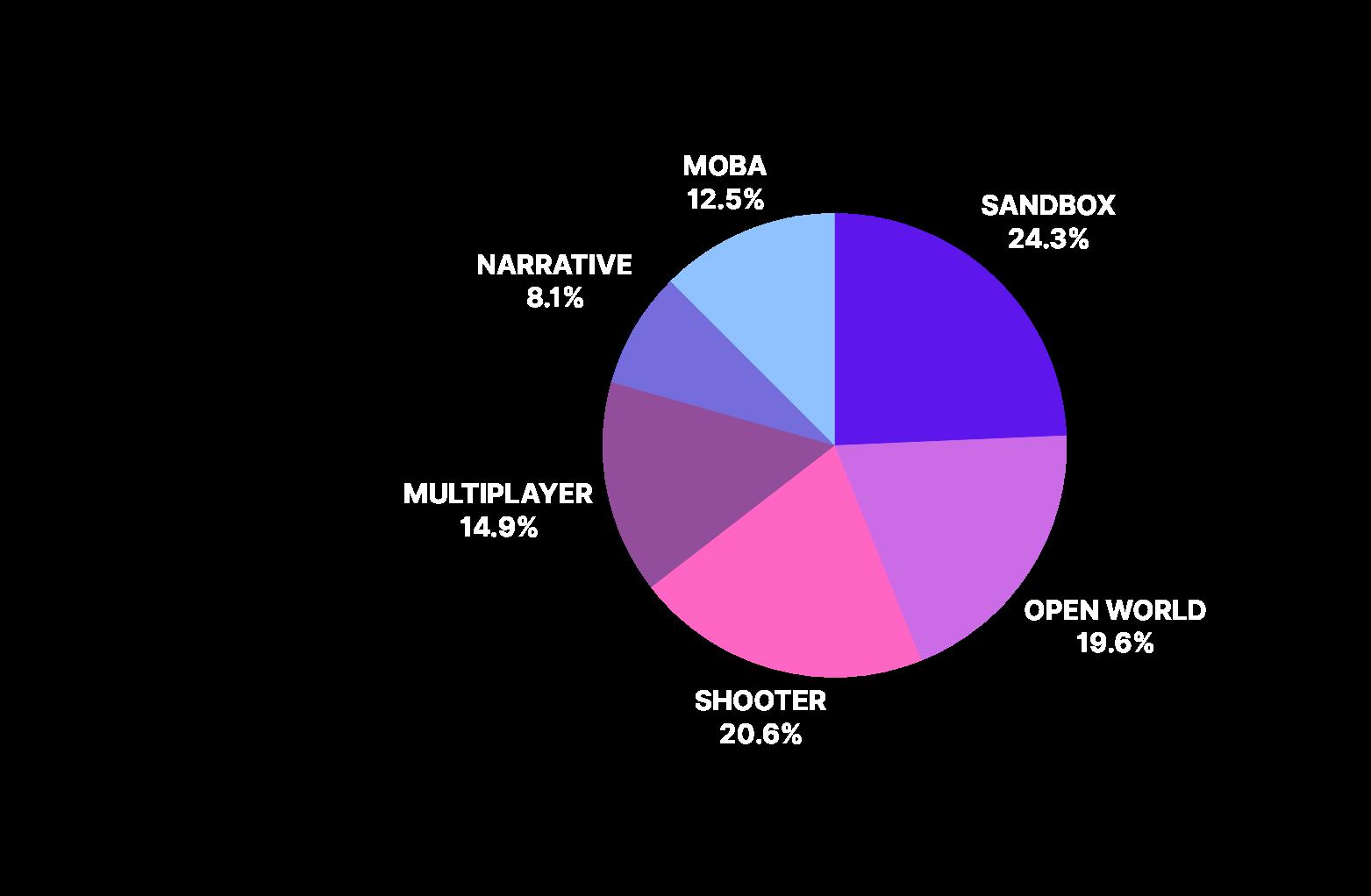




Amidst the whirlwind of daily life, people often take for granted the simple task of opening their eyes to navigate through the jungle of living. Through many ways, this simple task can turn into a luxury, one form brings an aching discomfort to the eyes and the urge to scratch. This form is colloquially known as sore eyes.
The Department of Health (DOH) defines conjunctivitis, pink eye, or “sore eyes” in the Philippines, as the redness and inflammation of the delicate membranes known as the conjunctiva, a membrane that covers the whites of the eyes.
Conjunctivitis symptoms take on a variety of forms and are crucial diagnostic indicators. Redness, irritation, viscous discharge, and even clouded vision as a result of severe tearing comprise some of the symptoms. Conjunctivi tis can persist for 7 to 10 days, varying from different virus strains.
taken. It easily spreads through hand-toeye contact and, to a lesser extent, via droplet contamination, emphasizing the necessity for strict hygiene precautions to stop its spread.
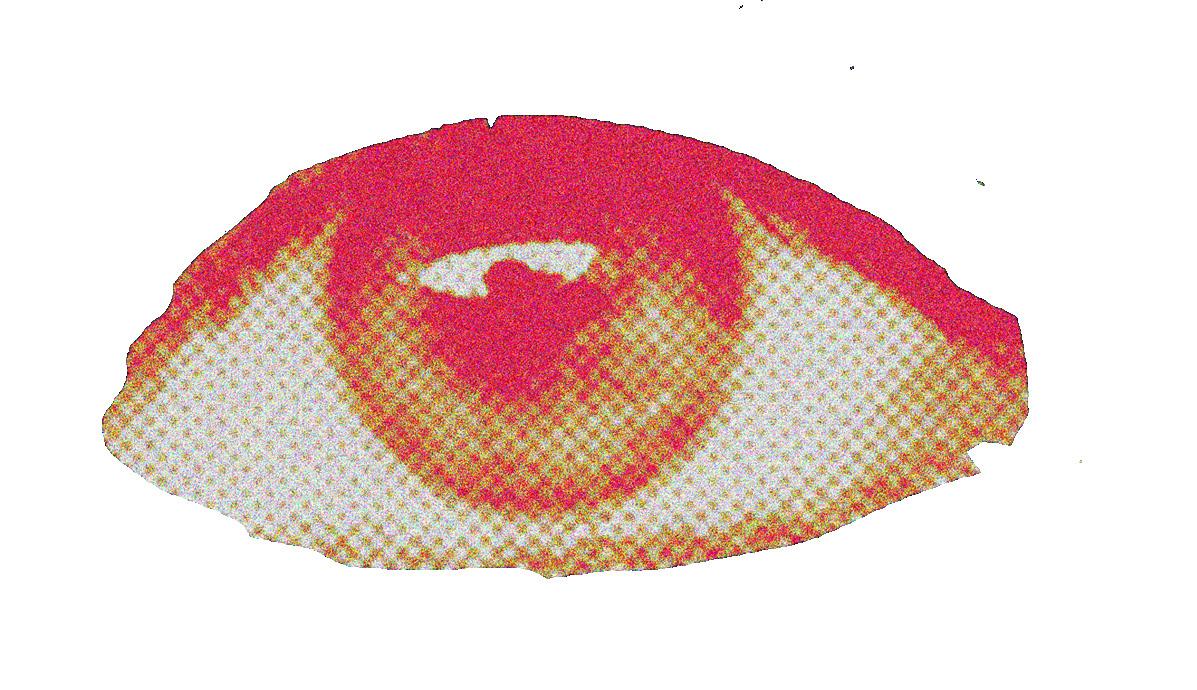
Discomfort reduction treatment is only available for viral conjunctivitis due to the lack of a definitive cure, such as how antihistamines and cool compresses only ease irritation. Nevertheless, depending on the strain itself, affected individuals may or may not find treatment.
Increasingly alarming is the fast spread of infection which urges precautions to be
Its epidemic-like transmission is demonstrated clearly through the former situation of grade 12 senior high school students. Nine students in grade 12-HUMSS were initially affected by what appeared to be an isolated problem, but had spread to two more students in grade 12-
Dr. Jeanne Marie Morcoso-Llana’s medical advice greatly helped the school take preventative action in response to the worsening situation. The grade 12 classrooms underwent urgent disinfection, rendering them temporarily closed. To accommodate, grade 12 advisers had to share rooms with other instructors due to an upcoming meeting. Moreover, the parents of the students affected were informed to prepare for these changes.


MA. ATASHA YZABELL VASQUEZ
Gone are the days of giants and monsters, for the real threat in microbiology are so tiny that they are often overlooked by the naked eye—meet Mycoplasma, the tiniest self-replicating organism known on the planet. Formerly known as Pleuropneumonia-like Organisms (PPLO), these uniquely structured bacteria are capable of causing respiratory illnesses, including pneumonia, making them a common source of infection, not only in humans, but also in animals.
Highly contagious Mycoplasma has the ability to spread airborne and through contact and is a constant threat to livestock, affecting cattle, sheep, goats, and poultry. The severity of the disease is dependent on the variation of the strain of Mycoplasma, the age of the animal, the region, and the type of species.
For example, a 2015 study in the UK found that 50% of 2,460 calves with a history of respiratory disease had an exposure to Mycoplasma bovis, a variation of Mycoplasma in cattles, according to the Veterinary Ireland Journal. These underscore the importance of monitoring and controlling these infections to prevent disease outbreaks and economic losses in the agricultural industry.
Unfortunately, most infected animals will not display symptoms of bacteria until they are stressed. While advancements in Mycoplasma detection exist, their high cost puts them out of reach for many small-scale operations.
This issue is what Benjamin Balingbing, Fiona
Kim Darlene
and Precious Margaret Vizon, a team of Grade 12 Stu-
-
dents from the Bicol University College of Education Integrated Laboratory SchoolHigh School Department (BUCEILS-HS), aimed to tackle in their research presentation for the Poster Category, representing the Philippines in Science Castle Asia 2023 in Rekascape, Cyberjaya, Malaysia, last October 21-22, 2023.
With the research entitled “Solar Lateral Flow Immunochromatographic Assay (LFIA) Processor as Rapid Diagnostic Test for PPLO (Mycoplasma)”, they aimed to propose a solar-powered device for diagnosing diseases in livestock using LFIA tests, a highly reliable and efficient diagnostic method for detecting Mycoplasma infections. This study is focused on early detection and isolation preventive measures.
“Basically, we aim to create a machine that detects Mycoplasma in livestock.
Our goal is to develop a diagnostic test to identify the illness and isolate infected animals from the rest.” Dollente said in an interview. “The machine uses color in the animal samples to indicate the presence or absence of Mycoplasma.”
The team aimed to achieve these goals:


Whether you plan on enjoying life beyond 40 or extending your plans past 2042, a special treat awaits Bicolanos that year, especially if you're a fan of witnessing the Sun and Moon's peculiar space collaborations. Brace yourselves, because all of them will unite in one spectacular phenomenon; the April 2042 Solar Eclipse. Get ready, because all eyes in the Philippines will be fixed upon the heavens for this celestial masterpiece.
Before exploring 18 years into the future, take some steps back, far enough to bring you to the starting origins of the Philippine folktales. Eclipses were interpreted by ancient people as the works of heavenly beasts. One Maranao folktale recounts the Arimaonga, a sky-dwelling beast engulfing the Moon, causing a lunar eclipse. Moreover, a T’Boli legend says that the Sun is devoured by a sky-bound serpent, leading to solar eclipses. Across the archipelago, similar sky beasts, such as Bawa in Hiligaynon stories or Laho in Tagalog legends. Now, pace yourself to the grand staircase of scientific explanations. Taught in grade school, solar eclipses occur when the Moon is positioned between the Earth and the Sun, casting a vast shadow. Statistically, there are two to five solar eclipses annually. So, why should Filipinos look forward to this 2042 solar eclipse if it's like any other eclipse in our century?
Before anything else, there’s one thing you should know about the Philippines. Due to its relatively small size and location, the sight of a total solar eclipse in the
country is a rare occurrence, with only a few anticipated for this century.
As such, the April 20, year 2042 solar eclipse should be patiently anticipated by the Filipinos. The solar eclipse will traverse over the island of Palawan, moving to the east over Masbate, then finally moving out of the archipelago through Albay, where the Mayon Volcano, the top dog of cone-shaped volcanoes, is located.
According to an article from Esquire Philippines, a news magazine, astronomers call the April 2042 eclipse part of Saros 139, a series of 71 solar eclipses, happening every 18 years. The first of which occurred in 1501 and the last will end in 2763. This shows the rarity of such events and the mere chance of having the opportunity to observe this eclipse in the heart of the Philippines.
The eclipse would last approximately half an hour, from 1:00 in the afternoon until 1:30 through the Central Philippines. As
the
will
its
are
and
Safety is still predominant when
solar eclipses. Gazing at an eclipse can damage your eyes. Factually, the Sun is 400 times larger than the Moon! Thus, the Moon only covers a minuscule part of the star and casts a shadow approximately as large as itself. Always use solar-viewing glasses or specialized telescopes to protect your eyes from harmful radiation for safe eclipse sightings.
Overall, the Philippines’ 2042 astronomical calendar is something to be curious about. An eclipse, traversing over the heart of the Philippines, witnessed by Filipinos and tourists alike, is waiting for us soon, getting closer every year. So, extend your plans to 2042, if you’re a 2000s baby, live past your 40s and don't miss out on what other cosmic wonders await.
boost the country's agricultural technology sector and strengthen the economy. Their proposed solution prioritizes animal health, promoting efficiency and environmental sustainability, and offers a low-cost innovation, particularly beneficial for local farmers.
“It's very difficult to afford medical treatment for sick chickens, the problem we're aiming to solve is the provision of medical aid for chickens—not necessarily curing them, but diagnosing them to prevent an outbreak.” Vizon expressed. “The farmers will benefit primarily because this is their livelihood. We wanted to do this for them so they wouldn't incur further losses.” Dollente also added.
As Dollente highlighted, “Food security is indeed a real issue.” She elaborates by drawing a connection between early detection of animal illnesses and prevention of food shortages. “Just like with African Swine Fever, if we experience a shortage, prices will rise. To prevent this, early detection of animal illnesses is necessary.”
Needless to say, in their research journey, they recognized the challenges posed by their lack of resources and capabilities, particularly in the machine's creation phase. Nonetheless, they remained hopeful that professionals could take their work to the next level.
“The aim is to create a machine for detection, for further actions, we leave them to the officials and professionals—it
is beyond the scope of the research and our capabilities as student researchers.” Dollente expressed. “I want to see how someone could conduct it better—someone who is a legitimate professional, with the means and connections.”
Despite the struggle, Excija tells future researchers who aim to follow their footsteps. “Even though it was difficult, in a way, I'm still glad we pursued it, especially with the increasing number of diseases emerging everywhere. Let's not be afraid to explore something difficult and challenging, let's be curious and have the courage to explore because you might
discover something that could revolutionize the future.”
With a spark of curiosity, these Filipino high school students ignited a revolution in animal health and food security. Their proposed solar-powered diagnostic tool isn’t just a test, it’s a testament to the power of curiosity conquering complexity. Can their invention be an essential tool of every farmer’s toolkit? The answer lies in future research and collaboration. However, one thing is for certain: These students have proven that even the most complex problems can be cracked by a curious mind.
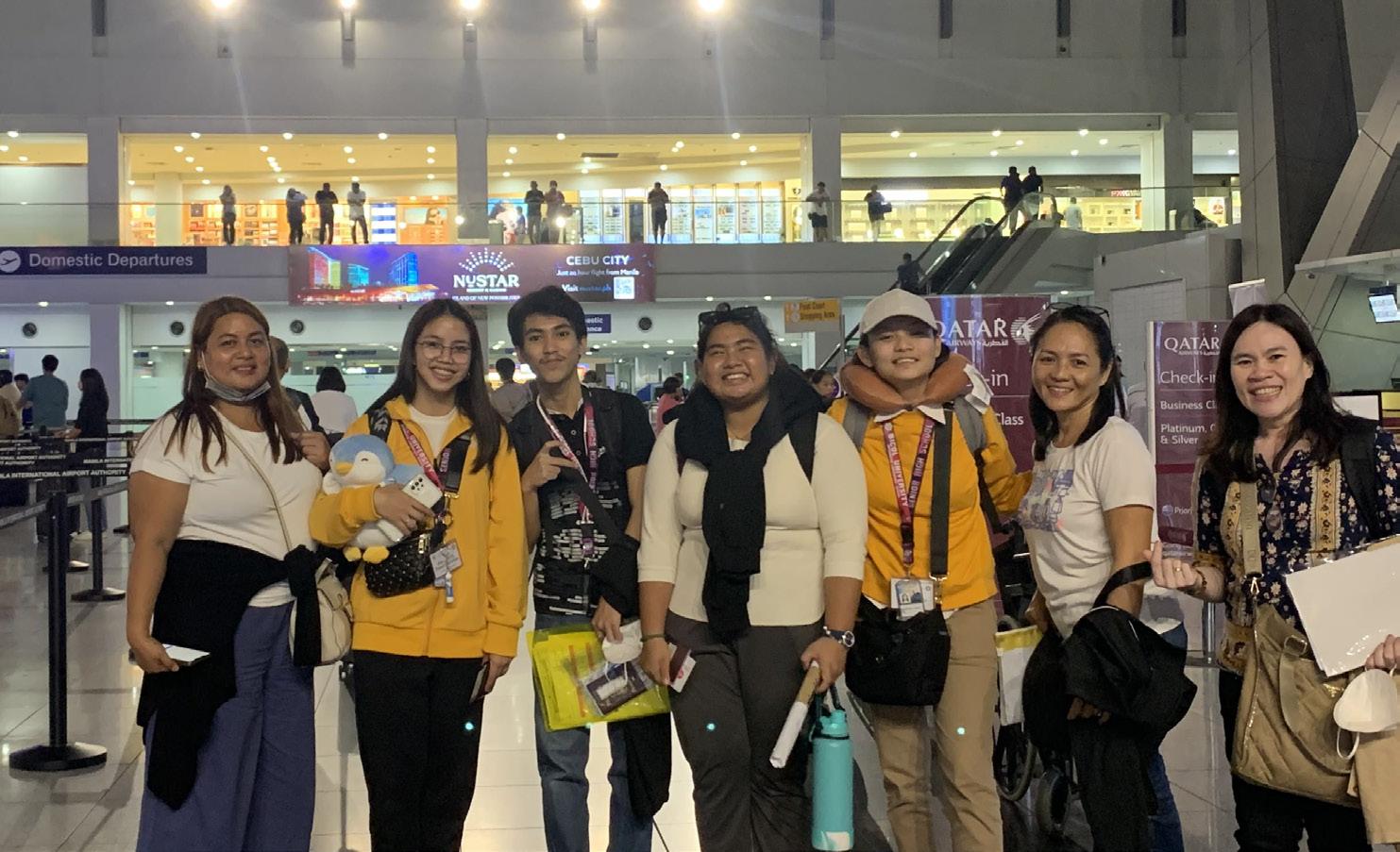


 DAVE WESLEY MOSTOLES
DAVE WESLEY MOSTOLES
According to the American Academy of Dermatology, 85% of people between the ages of 12 and 24 are invaded by acne, dark spots, and inflammation. It’s a world where they struggle with ceaseless battles. However, a ray of hope comes with Niacinamide, a potent ingredient in the vitamin B complex family, capable of vanquishing these unwanted invaders.
Vitamin B3, also known as Niacinamide, is a water-soluble nutrient that holds remarkable potential in skincare. Commonly incorporated in the form of serums, creams, toners, cleansers, and sunscreens, niacinamide’s popularity shines with that of a superstar.
Its endorsement on the media platform
TikTok by content creators, scholarly or not, has earned it the title of ‘holy grail ingredient’ for many due to its numerous skin benefits. This turned niacinamide into the selling points of countless skincare brand products. But why?
With its small molecular size, it is easily absorbed and addresses skin concerns on a cellular level. Once inside, it aids the skin in the creation of vital coenzymes: nicotinamide adenine dinucleotide (NAD+) and nicotinamide adenine dinucleotide phosphate (NADP+).
NAD+ helps give skin cells energy for optimal function and maintaining DNA shape. NADP+ on the other hand, helps in building and repairing important components within the cell. Niacinamide activates both, aiding in cell repair to maintain skin structure and function despite damage from environmental and internal stressors.
Niacinamide’s gentle and non-irritating nature allows for its benefits to be applied wherever, regardless of skin type. Moreover, its renown is from brightening complexions through melanin transfer inhibition, preventing dark spots and evening out skin tones.
Research indicates that 2% topical niacinamide restricts oil-producing enzymes, beneficial for oily and acne-prone skin, balancing sebum levels, diminishing shine, minimizing pore appearance, and preventing breakouts from excess oil.
Additionally, its anti-inflammatory properties soothe sensitive skin, alleviating redness, swelling, and discomfort from conditions like acne, rosacea, and eczema. It also promotes the synthesis of ceramides, fatty acids, and proteins, strengthening the skin’s barrier against irritants. Clinical trials also confirm its ability to retain moisture, benefiting those with dry skin.
Moreover, its stability allows for versatile pairings, doubling its efficacy when combined with other skincare ingredients that can tackle multiple concerns simultaneously. Paired with salicylic acid, it reduces acne breakouts. With retinol, it refines skin texture, fights aging, and counteracts dryness. Teamed with vitamin C, it brightens, fades hyperpigmentation, and protects against oxidative stress.
Today, niacinamide stands at the forefront of every skin care establishment waiting to be included in everyone’s skin care regimen. As science continues to unlock its potential, the jack of all trades is a testament to its ingenuity in working with the evolving beauty needs and standards of society. With each application, niacinamide unsheathes its sword to fight unwanted skin invaders; with the mission of giving the skin a healthier and more radiant complexion.


 FREAL JAVEN DEL CASTILLO
FREAL JAVEN DEL CASTILLO
Whenever scientific discoveries make it to the limelight of news headlines, it is our common tendency to view them in a big and complicated way. While it is often deemed that these discoveries are solely reserved for great science minds, or perhaps confined in the most sophisticated environments, this recent unexpected breakthrough proved that it has not always been the case.
Meet Mikey Bustos, a Filipino-Canadian content creator, singer, and comedian, who was recognized for the discovery of Meranoplus bicolor, commonly dubbed as the Bicolored Shield Ant, a species that has never been recorded in the Philippines before.
Unforeseen Backyard Discovery
In a social media post, Bustos expressed his delight for being credited for the discovery of the said ant species, which he revealed he had just found in his own backyard at least two years ago. He shared that upon being intrigued by the ant’s distinct physical characteristics, he sent specimens to a myrmecologist, Dr. Dave General, an ant taxonomist from the University of the Philippines, Los Baños. Later on, they were both surprised to find out that the said ant was not yet known to exist before in the country.
A Closer Look at the Ant Species
So, what makes these ants so special?
Picture this: a tiny red and black marvel, sporting a fuzzy coat and spiky armor. But here's the twist – that fuzziness isn't just for show. It's a vital part of their defense mechanism, acting as a shield against enemies, enabling them to live alongside other ant species. Hence the name “bicolor shield ant,” encapsulating its dual colored body and formidable defense mechanism.
And just when you thought they couldn't get any cooler, they also pull off an incredible tactic by ‘playing dead’ by means of curling up to a ball to trick their enemies. Nevertheless, in spite of their interesting defense mechanism, these ants are known to be slow-paced movers.
Moreover, according to a research article titled “Nests and Habitats of Ants Observation in Aurangabad Maharashtra, India,” this ant species nest in “bare land, sparse forest, and in less disturbed areas.” Bustos also clarified that his newfound ant species is its first record in the Philippines, yet it can be already found in nearby countries such as Indonesia, Singapore, and Malaysia.
The bicolored shield ant, which belongs to the subfamily Myrmicinae, marks as the 555th documented ant species in the Philippines. This prompted Bustos to coin it as Species #555. Thanks to Bustos’ curiosity and love for “ants,” the country’s insect science, in some way, had sparked interest in the minds of Filipinos.
Amidst his significant discovery, Bustos underscored that despite their miniature size, studying ants play an imperative role in making people “love the environment and how they fit in the ecosystem.” The content creator also encour young Filipinos to venture explore the country’s biodi
Because, indeed, who would have thought that a simple stroll around driven by a hint of curiosity can ignite a remark able breakthrough. As Bustos said, it is simply fascinating to discover what may be lurking in our backyards, “if only more people took the time to look.”

 SOPHIA MAE ALVEA
SOPHIA MAE ALVEA
Two female engineers, Project Officer Cleorita Maricon Sadiaza and Project Manager Chair Dr. May Rose Imperial, spearheaded the orientation for the Women Engineers as Instruments for Sustainable Engineering in Renewable Energies (WISER) Project last January 22, at the Bicol University Office of Student Affairs and Services (OSAS).
This orientation program discussed the project’s objectives. The objective was to introduce the WISER Project to Grade 11 and 12 STEM students from Bicol University Integrated Laboratory School (BUCEILS). The aforementioned presented the advancement of renewable energy engineering programs and urgent energy security and resilience needs.
Dr. Ma. Teresa M. Abainza, BUCEILS’ unit head, commenced the program with opening remarks, followed by introductions of the speakers.
The orientation, led by Miss Sadiaza, introduced the Philippine Technological Council (PTC), emphasizing its role as an umbrella organization for all engineering professional organizations in the Philippines. Sadiaza clarified the inclusivity of the WISER Project that despite its name,
it aims to encourage participation from all genders into engineering programs.
The discussion delved deeper into the critical need to tackle the nation’s energy shortage and shift towards renewable energy sources.
The WISER project is set to launch in eight cities as part of United States Agency for International Development’s (USAID) Cities Development Initiatives, focusing on the critical problem of energy shortage and the potential of renewable energy sources. During the event, it was further stated that engineering has great significance in producing renewable energy, and the organizers provided students access to a mobile application that included practice tests and modules about renewable energy.
The team also announced an Ideation
and Project Competition to encourage student innovation in addressing the country’s energy crisis.
Through these initiatives, the WISER Project aims to foster a culture of sustainability and innovation in engineering among senior high school students.
The combined initia- tives of a competition, an interactive application, and a career seminar is the project’s goal in order to equip students with both knowledge and a sense of responsibility for a sustainable future in the Philippines.
“These insights were given since you, the Grade 11 and 12 STEM students, are the next generation of professionals. Bear in mind how to help our country as a whole, regardless of whatever profession you choose,” Dr. Imperial said in her closing remarks.

Modernization greatly affects all aspects of daily life, whether or not located at home, in work, businesses, or personal lives. One of the most important of these is education, not just for the development of young minds, but also for all members of society. Gumenyuk et al. (2021) states that the implementation of contemporary technologies to education and the learning and teaching processes creates completely new opportunities for achieving higher levels of development, initiative and well-being for learners.
This is one of the goals of the Department of Education (DepEd), as in 2016, DepEd Secretary Leonor Magtolis Briones stated how important the modernization of education is to the Philippines. The country depends heavily on international aid and cooperation to achieve these set goals.
An explanation for the transition from blackboards to whiteboards is due to modernization prioritizing health and safety, as the chalk dust left behind from writing on blackboards was known to cause and trigger respiratory problems to learners. This is an example of modernization in the classroom. Modernization in recent times is seen as negative due to their kafkaesque effects on society, but it was originally made to provide convenience, health and safety, and ease of
access to the public.
Replacing Old With New Recently, Bicol University College of Education Integrated Laboratory SchoolHigh School (BUCEILS-HS) Department has installed their own TVs in many of the classrooms for education purposes. Prior to the use of these, slideshow presentations were shown through projectors provided by the institution.
These projectors were clunky, outdated, and hard to use. Lights within the classroom had to be turned off for the projected images to show clearly, and sometimes this wasn’t enough, as natural light from the sun usually shone inside classrooms and prevented projected images from showing properly. Whenever
the projections could be seen properly, they would be too bright and students’ would strain their eyes from prolonged exposure, which could lead to other problems.
Not only were these projectors lacking many quality-of-life features, but they were also lacking in quantity. With how innumerous they are, each classroom of a class batch had to share one projector with each other, needing people to carry it to and fro. This uses up precious time as compared to TVs mounted on the wall of each classroom, where connection is the only step in setting up.
The obsolete design of these projectors also makes connecting hard to perform due to most designs having only a VGA input, a type of cable that has been unsupported by laptops for years, which creates the need to use an adapter. The modern and commonly used HDMI is straightforward with its connection, and provides better quality to the connected devices. Additionally, wireless connectivity through Bluetooth or Wi-Fi provides a wider range of device connectivity, including smartphones or laptops that do
not support connection cables.
How do these compare to markers, paper, and whiteboards? In terms of preparation, it is much harder when using traditional methods, with preparing visual aids before the class being much more advantageous than writing on the board during lectures. Overall, traditional methods have become a tertiary tool for lectures, with modern methods being secondary due to their efficiency and effectiveness.
In addition, the preparation of traditional methods would have to consider how the students will be able to perceive the material. The students too close and far away from them will have difficulties in seeing the material, along with students from different sides of the classroom.
The more is added on the board, the less space there will be for additional information of the current lecture. Using a digital slideshow centered in the classroom will prevent the problems of both perception and limited space.
Embracing Progress and Impeding Harm
Modernization is an important process in progressing sectors of society and making education available for everyone.
Adoption of newer technologies will help improve students’ performance in school, facilitating the learning and teaching processes. Archaic and obsolete methods can still be used in lectures, but should not be used as the primary method of teaching as it could cause more problems as compared to modern methods.
Using TVs for educational purposes is a better method to deliver information to learners. The harm they cause is more likely caused by misuse, not by proper use.
Advances in technology are achieved with the objective of improving quality-of-life.
Shifting to accommodate these advances are ideal to create more knowledgeable learners in the field of education.



Gilas

“Sorry

Modernity embraced the concept of Artificial Intelligence, assisting with various human tasks. From aids as simple as automatic grammar correctors to having the ability to write full essays through the use of ChatGPT, Photoshop’s automatic photo generator or photo generative fill, and now GMA’s recoiled artificial intelligence sportscasters. It is undeniable that AIs are a powerful tool in this age of information and technology.
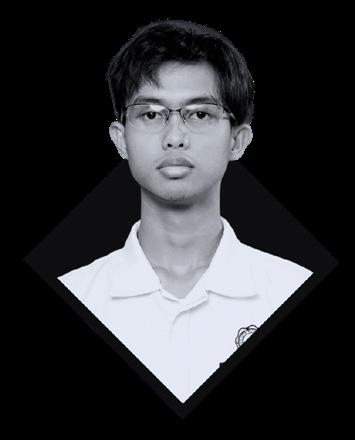
While bagging more than their abled counterpart did in the last Asian Games to participate in the upcoming Paris Olympics 2024, Filipino paralympic athletes reigned in the spotlight but only on crumbs of our media’s algorithm. Because even with a stack of golden bites for the country, the Philippine mainstream is yet inclusive to try paralympic achievements as the main course. And I think we can all agree, too, that we should.
The landscape of Philippine competitions has long been anchored in beauty pageants, boxing matches, and basketball where our Filipino pride thrives. Hence, the penetration of the mainstream by other sporting events has never been a free-throw shot. It took gymnast Carlos Yulo, EJ Obiena, and Hidilyn Diaz to supply the country golden hauls, some of it even the firsts, before their respective sporting event could make rounds in social media.
If that extent is simply required for athletes competing outside of our 3 B’s to earn applause from the whole country, then it only becomes questionable for the para-athlete’s situation. Our paralympic contenders for the upcoming Olympic event in Paris hauled the highest notch of the country in the said event. Hence, it leaves no reason for paralympic athletes to not round the news broadcasts.
Although, support through cash incentives are being provided in respect to the place attained by an athlete. But people need to understand that there is an exclusive relief and strength for athletes in being mainstreamed that cash prizes could never equate to, and that is hearing the support of billions of Filipinos behind the best foot they step out with. In my years of experience as a campus sports writer, I have witnessed a fair share of stories of how mere cheers resonates to players as reasons to put their best foot forward. And that alone is evidence enough to have our collective push for them.
Don’t get me wrong, this is not an attempt to advocate for more representation, nor am I using the disability-empathy card as reasons for para-athletes to be mainstreamed. They do face daily handicaps, but we certainly do not need para-athletes to be framed in an
Clarkson’s last efforts propelled the team to a 96-75 victory, tallying a team-high 34 points, with 2 rebounds, 3 assists, and 1 steal.
As the dust settled on the FIBA World Cup 2023, Germany emerged victorious over Serbia 83-77 behind Dennis Schröder’s 28-point winning performance, which ultimately crowned him the FIBA World Cup MVP who averaged 19.1 points, 6.1 assists, 2.0 rebounds, and 1.4 steals per game.
The 19th edition of FIBA’s flagship event took place for the first time across three host nations, returning to the Philippines after a 45-year hiatus along with Japan, and Indonesia.
The Philippine Basketball Team could have gained direct qualification to the 2024 Olympiad had the
finished as the highest-ranked Asian
Instead, Gilas Pilipinas hopes to break the country’s 52-year Olympic drought as the national team sees action in the FIBA Olympic Qualifying Tournament (OQT) from July 2 to 7 in Riga, Latvia.
However, mainstream media raises a red light towards such innovations on the grounds that it disregards human abilities, and can sometimes even be favored more than what a human person can offer, affecting jobs, employment, and integrity in various sectors. And in one way or another, the red light was ignored.
On September 24, GMA Network introduced their newest innovative sportscasters AI, Marco and Maia, for season 99 of the National Collegiate Athletic Association. Senior Vice President and Head of Integrated News, Regional TV, and Synergy, Oliver Victor Amorsolo, considered it as “A groundbreaking initiative that significantly impacts our objective.” as reported by The Manila Times. He further expressed his determination to technology integration stating that incorporating these generative AI into the field demonstrates their commitment to providing credible and valuable information, as well as enriching the lives of Filipinos worldwide.
Assistant Vice President and Deputy Head for GMA Integrated News Social Media, Aileen Rae Perez also added
that it shouldn’t be seen as a threat, and that the initiative’s goal is to start a healthy discourse in the use of AI to improve the means of modern journalism and to effectively deliver information to the evolving preferences of the general public.
And this is where the problem comes in, such “cutting-edge advancements” nabbing the slot that was supposed to be for potential seasoned broadcasters that can expound every tactical move with emotive expressions, giving life and spirit to the game. Such are adored and sought out by many communication students and campus journalists who have the very right to be disappointed and discouraged with their respective talents. Because what this situation unfolds to school writers is the gradually surfacing future that their voices, words, and faces are no longer in need.
Bearing the weight that the Philippines is currently the 7th place holder for the most dangerous country for journalists according to the Committee to Protect Journalists’ (CPJ) Global Impunity Index 2022, school publications and journalism students are still pushing

through amidst red tagging and public cancellation scares. And yet such risks taken appear to be too insignificant for big media companies to count AI’s as their reporters. And while these journalists hone their craft and exhaust their words for the truth, AI’s delivering the casts as unprecedented and unjustified replacements leave nothing but degradation, belittlement, and a massive insult to them.
No one is to blame if people, institutions, and media companies are incorporating modern technology and AI into their workforce. With the given benefits and efficiency, the boost that it carries is surely in demand. From a general perspective, media organizations utilize AI to ease the work of transcribing interviews, subtitling, as well as engagement-related settings to amplify their content. With these vast and progressively growing capabilities of AI, it is the key to transformative steps would no longer be a surprise.
However, what is expected can still disappoint. Taking this into consideration, we should ponder: What— if not where, is the fine line between AI and real
The common phrase in gym settings, memed to the point of online notoriety, represents the fear of being seen as inferior by your peers.
In the Philippines, where the average gymgoers are aged 25-34 years old, students in their late teens might find it intimidating to fit in. Most beginners, especially those who do not have colleagues who already go to the gym, typically find it hard to initially start their reps, fearing what other gymgoers might think of them: Why is everyone more fit than me? Is he looking at me? Am I using this leg press right?
it’s that people look at themselves more than they’ll look at others—and they can’t judge you if they are too busy judging themselves.
Gyms can also become a somewhat nurturing environment. One student notes a time when he used a lat pulley wrong, being so foreign to this equipment, and one of the other regular clients helped him fix his posture. This wouldn’t be the last time that’d happen, he says.
emotionally-provoking sense to stir up the readers and for them to earn their place in the algorithm. If we crave for more international recognition and choke on our Filipino pride, expanding our congratulatory greetings to our para-athletes is a start. Because if we consider that the greatest incentive for an athlete to compete outside of the country is simply the recognition, not only do we get to show genuine appreciation for our representatives, but perhaps provide a little nudge to someone, disabled or not, to go for it and try.
Home gyms may be a notable alternative, but most home gyms lack certain equipment that only gyms can provide without sacrificing a hefty investment. So I asked BUeño high schoolers who frequent the gym to see whether this issue was familiar and how they surpassed it. Here’s what I got:
This happens to most, if not all. Everyone thinks they’re being looked at so much so that it merits its own psychological phenomenon called the Spotlight Effect. However, if there’s one thing that the mirrors brimming the gym walls tell you,
However, even knowing that it is unlikely for people to judge you and, in fact, be more supportive, the lingering thought still creeps up on you.
One suggestion is to prepare a routine before going to the gym so you’ll focus more on ticking off the checkmarks rather than the thought of other people being there. If you’re not one for preparing lists or know little about workouts, hire a personal trainer from the gym. That way, you’ll have someone who understands the strife most beginning gymgoers
DAN ANTHONY ABALAYAN
Clyde Denzel Hernandez, Cazandra Nicole Sabdao, Denise Maury Sia, and Arvic Janzen Dimalaluan, all students of Bicol University College of Education Integrated Laboratory School High School, rampaged in courts to joust for the City Meet 2024 against all competing athletes from Oro Site High School during the Zonal Meet held in Puro Elementary School, Puro, Legazpi City, last February 1, 2024.
Hernandez, Sia, Dimalaluan, and Sabdao, destroyed and dominated Badminton Single A boys, Single A girls, Single B boys, and Single B girls category respectively to bag first place each.
Hernandez cannoned airstrikes to slam the opponent’s floor for both sets with 21-11, 21-9, gaining a ticket to the city meet slot.
“About my opponent in the zonal meet, I’m thankful for him bringing up a fair and nice game,” said Hernandez.
Effortlessly whipping rackets to dominate
the category, Sia finished her run with a whopping 21-6, 21-8 triumph.
Dimalaluan on the other hand rained down shots to drown the other side with at least nine-point gaps for both sets, 21-7, 21-9.
Meanwhile, Sabdao managed to overpower the attacks against her floor to outlast the second set’s race with 4 points ahead to haul 21-16, 21-18.
Despite the smooth victory, the team initially thought of being at a disadvantage due to both side’s training sessions.
“Actually akala namin nasa disadvantage kami kasi 2 months before the zonal, may proper training na yung mga kalaban namin and may coach pa unlike us na kanya-kanyang training or nag-tratraining nang walang coach na nagtuturo. Pero thankfully kinaya naman since mas lamang kami sa experience.” team captain Dimalaluan, explained.
“Masaya (ako) kasi sulit yung training namin at di nasayang yung support ng mga natalo naming teammates sa unit meet.” He added.
According to the captain, he does not hold the individual skills of his teammates, hence focusing on strategy more led to the top.

journalism? Convenience and Innovation? Campus journalists’ frustration not only stems from the fact that AI is a potential substitute for their future professions, but also the reality that these AIs are not fit to be so in the first place. Sportscasting’s essence comes from the caster’s passion. And as it stands, there are questions regarding generative AI’s capability to exhibit such enthusiasm for the game. In relation to this, the idea that a sportscaster— a person with a responsibility to have a relatable personality, is an AI with flat facial and vocal expressions, could be very much disturbing to viewers, making it a feat that is bound to boomerang even without public criticism.
A fine line must be drawn as to what innovation really means, especially now that lives, jobs, and the future of campus journalism are at stake. Technology can be convenient, but convenience costs full expression of the essence and process of sportscasting. After all, sportscasting and journalism are an art that touch humanity through the stories of storytellers, and no amount of AI advancement can ever match that.
After a two-year hiatus due to the pandemic, Bicol University once again scorched as champions against six other universities and colleges in the Bicol Region State Colleges and Universities Athletic Association, September 3–9, 2023, at Central Bicol State University of Agriculture, Pili, Camarines Sur. BU’s domination brought home 117 gold, 54, silver, and 31 bronze medals to defend their title. CBSUA placed next with 25 gold, 10 silver, 9 bronze, while Camarines Sur Polytechnic Colleges landed third with 16 gold, 18 silver, and 25 bronze medals.
Bryan Louis Baron, a third-year nursing student and an alumnus of Bicol University College of Education Integrated Laboratory School- High School (BUCEILS-HS), was one of the fierce haulers that dived and sacked gold medals for 200m Backstroke, 4x100 Free
through and will guide you through a productive routine with knowledge of available equipment.
Also, it’s best to try different gyms. Different gyms cater to different needs and have different vibes so to speak. Find one you are comfortable with.
If previous options are unavailable, you can always have friends on your back, preferably ones who already go to the gym and can teach you, or ones who share the same goal as you.
With your earphones (ideally wireless so they won’t get snagged in the bicep curls) ready to go, the only thing left to do is begin. It’s always the hardest step, but it’s the fastest. Before you begin your physique journey, know your routine, and educate yourself on gym etiquette: like don’t hog the machines, and always wipe your sweat after using.
Everybody deserves a right to belong in public spaces. If it doesn’t happen to you, be the change that has been long overdue.
and

Relay, 4x200 and 4x50 Freestyle Relay events, silver for the 200m freestyle relay, and bronze for the 100m backstroke.
“By the time that the schedule for the regional SCUAA was announced, a little over 2 weeks were left until the competition. Not having properly trained for over a year, I spent those 2 short weeks trying to recover my stamina. Alongside training, I also finished all of my schoolwork as early as possible so that I could leave for the competition without much worries in terms of academics.”
Bryan shared.
In years of being a delegate of BUCEILSHS for the Palarong Bicol, this is the first time Bryan returned home with overflowing medals from a regional competition.
Bryan explained “I would say that my past Palarong Bicol competitions were much more intense in terms of training and preparation. However, if I were to describe any significant personal changes, I would say that I’m now much more passionate about swimming than before. I don’t know the exact reason myself, but maybe it’s because I’ve rediscovered my love for the sport.”
He left a message for the young athletes of BUCEILS-HS to value the opportunities given due to the fact that they become a rare find as time passes.
Meanwhile, Senator Sherwin Gatchalian also poured support in his opening remarks to give inspiration for the Bicolano athletes and to reiterate the value of sportsmanship and camaraderie.
“Lagi niyong ipamalas ang sportsmanship at camaraderie sa bawat laro. Asahang patuloy niyong makakatuwang ang inyong lingkod sa pagsuporta sa angking galing at talento ng lahat ng student-athletes. Mabuhay ang kabataang atleta...” cheered Sen. Gatchalian.
Dr. J. Prospero E. De Vera III, chairperson of the Commission on Higher Education also congratulated and acknowledged all athletes for their unusual strengths to officially end the competition.
“We often hear no pain no gain and I know all of you take challenges and sacrifices... in pursuit to be the best athlete that you can.” Dr. De Vera III stated.
Bicolano delegates already allotted sweat and tears to conquer the National SCUAA that will be held at Tarlac State University this year.
FRANCIS A. OMBAO
Valiantly swimming against the waves, Simeon Paulo Nuarin, a grade
7-Scholarship student from BUCEILS-HS has not only tested the waters, but conquered it as he sailed in all four individual swimming categories despite being gassed out to compete at the relay medley in the Intramurals:Race to Laugh Tale 2024. Facing seasoned competitors, his perseverance and strong mentality made it to the last wave.
Being aware of the lack of swimmers in his team, Simeon did not waver and sent his best foot as the representative of team Alabasta despite the demerits obtained for double, or in his case, quadruple swimming. Pressure was inevitable as he was competing against experienced students that would surpass his strength. However, the points lost to demerits was not of his concern, but the shining gold medals in each category. Being new to the BUCEILS-HS student body, showing mercy is not anymore an option. He stated that instead of worrying about points lost, he should be more focused on triumphing in every category.
He kicked off the competition in freestyle and already made his mark as he went for the hard charge and finished 2nd in the race, losing by a mere second. However, as waves came together, they became larger as the backstroke category commenced with Simeon already pumped up from his previous match. His fierce swim allowed him to clinch 1st in the round winning by 2 seconds against his
up, having difficulty to adjust from stroke to stroke adding to his fatigue as he placed last in breaststroke, a major defeat yet not enough to cower his competitive spirit. He tries again as a last effort but just as waves peak, they also disappear as he also placed last in the butterfly stroke.
Disappointed with his performance, Simeon shed his tears. His story is a testament to the limitations of what ordinary people can achieve. No man is an island, and his journey in this competition may have been rough, but with the team relay medley right around the corner, his inspiration behind him competing, his father and his family,
during the competition, lit up his passion for victory.
He voiced out that he saw that they have the potential to win especially since his teammates dominated the female category. However, his burnout remains lingering in his legs. Ending it here may be good enough for him, but with his fire burning from words of encouragement received from those around him, he took off during the relay medley, in which he exerted his maximum effort to contribute in their dominant win
Simeon proved that competitiveness is one of the most vital traits an athlete must possess. Along with his confidence,

Valiantly swimming against the waves, Simeon Paulo Nuarin, a grade 7-Scholarship student from BUCEILSHS has not only tested the waters, but conquered it as he sailed in all four individual swimming categories despite being gassed out to compete at the relay medley in the Intramurals:Race to Laugh Tale 2024. Facing seasoned competitors, his perseverance and strong mentality made it to the last wave.

hoists mast to victory in Intramurals 2024
Gaining a total of 8,802 points, Wano, the team in green, was hailed as the overall champion in the Intramurals 2024: A Race to Laugh Tale on January 17–19 at Bicol University.
With a small margin of just more than 700 points, the red team, Dressrosa placed 1st runner-up garnering 8,088 of total credits.
Yellow team, Alabasta, on the other hand, followed with a score of 6,716; and Skypiea, the blue arc, settled with 5,981 points as the 3rd runner-up.
Justin Salvatierra, the team captain of Wano admitted that he did not expect their win, given the factors that affected their overall score, as well as the impression of others towards their team as ‘chill’ rather than ‘active’.
“I love my team so much, but I did think that we would place second after Dressrosa, after having so many blank slots in events and the demerits,” he said.
Salvatierra believes that it is not solely his leadership that made their team win, but also the effort that his members put into their respective events.
FRANCIS OMBAO
Vien De Guzman, Hanadi Tena, and Leandra Madraso sent ripples and flooded the Female Category of Swimming in the 2024 BUCEILS-HS Intramurals.
Hanadi Tena’s stroke mastery is on full display in the competition, participating in both backstroke and breaststroke in the competition and placing first with time intervals not less than 13 seconds between her and the other competitors.
“Honestly ang prinepare-an ko lang po talaga ang back since back po
talaga ang stroke ko and nagbreast lang po ako since wala na ibang maga-swim.” Tena shared.
The Female’s freestyle stroke kicked off the competition with Vien de Guzman’s victory asserting pool dominance with a touch time of 17.88 seconds with 8 to 9 seconds gap between her and the other competitors
Floating gracefully in butterfly style, Leandra Madraso heated up her


line with a victorious swim time of 21.73 seconds overpowering her opponents with not less than 16 seconds time gap.
Along with Simeon Nuarin, the three women also participated in the Team Relay Medley winning first place with a final time of 1 minute and 27.19 seconds
with 30 second time margin between them and Team Skypeia, who pooled 1 minute and 57.19 seconds.
SYNC WITH WAVES. Vien de Guzman, a Grade 7-Scholarship student of BUCEILS-HS, swiftly glides through the team
FRANCIS OMBAO, FITZ REYNALD BACOLOD
Wano’s cunning strategies stunned Alabasta, giving them the edge to assert dominance, besting 3–0 of 5, and hailing as champions for the Call of Duty
Mobile mixed finals during the Intramurals 2024: Race to Laughtale at Bicol University High School Department, January 19, 2024. Kicking things up a notch, Wano’s relentless pressure forced their opponent under siege despite Alabasta’s map choice that commanded the first game team win, 7-0.
According to Yna Buena, Captain of Team Wano, “Yung firing range, map ng kalaban yun pero thankful ako sa teammates ko kasi yung roles namin during game napapanindigan ng bawat member so parang yun yung naging reason bat nakuha namin yung lead.”
Jamesbond Benito, the top-frag of the first match also elaborated their plan, “Focus lang po kasi kami sa strat ko, kumbaga dalawa sa A, dalawa sa B, and isa sa mid, kaya po nanalo kami kasi sumusunod sila sa comms.”
Wano took the momentum as an advantage during their turn to select the map Raid which catered to their sly tactics, switching into a 5-man LMG lineup, spamming every opponent encountered, open or covered, and suppressing some positions in the map along with their mobility to take an early
Despite Tactical shocks, Alabasta snatched a few rounds led by Leyzel Rico’s clutch moments to keep the team alive and haul 5-3. But ultimately fell short-handed to their opponent’s unexpected wallbang strategy as Wano took game 2 with 7-3.
“Nagulat sila [her teammates], ako din nagulat din ako sa playstyle nila puro sila LMG... na nakaka-wall-bang kaya kahit nasa secured spot ka nasa tagong spot ka, kaya ka nilang bawasan ng health” Rico expressed.
Being on the brink of elimination, Alabasta left Coastal to their mercy, in an attempt to plant an early lead on the attacking side. But Wano maintained their composure and kept them at bay producing guerilla warfare, exchanging nail-biting clashes up until round 8, 4-4.
Wano capitalized their foes’ gun of choice and positioning, as they convincingly outgunned bullets in Alabasta’s heads, winning as champions, 7-4.
“Nagpush kami sa Long A kasi kaunti lang nagbabantay sa kanila sa A, tapos yung nasa B naka shotgun kaya nasa A kami.”
Benito, the MVP of the match explained.
Despite the loss, MVP Rico also expressed her sentiments, giving credit to the enemies’ tactical mastery.
“Feeling ko we could’ve done better, pero hindi lang siguro namin kayang tapatan yung experience and galing ng Wano. Pero super trusted ko yung mga kakampi ko.” Rico shared.

Meanwhile, Dressrosa’s swift maneuvers across the map earned them third place, leaving Skypeia’s attacks staggered as
they continued to get outflanked, 2-0.
On a separate event, Alabasta barraged and reigned female’s Call of Duty Mobile battlefields to best two out of three, and bag the championship title against Wano 5-3, 5-3, January 18, 2024, at BUCEILS- HS.
Falling into tightlocks during early plays of match one, both teams struggled to gain advantage to a 2-2 tie until lone Eowyn Mojal clutched the final round of the match against a ticking bomb and an opponent on a spree, 5-3.
Alabasta welcomed match two with Yesha Tolosa’s rapid-fire to take four dog tags during the second round and counter Yna Buena’s bloodthirst to take four for Wano, yet Alabasta’s strategic plantations and rotation detonated 5-3 aul.
“Kasi sila naga-rush talaga sila sa isang site, so sabi ko bantay tayo sa isang site, kung sa kabilang site mag plant, diretso tayo doon.” Buena said.
“Hinahati na namin yung team, so dapat may mag defend sa B, may mag defend sa A, at kung may makitang kalaban, rotate agad.” Alabasta’s Leyzel Rico explained.
Being Alabasta’s MVP, Rico’s fennec rained in sands to gain 10/5/3 and 10/7/2 in KDA’s for both match one and two respectively.
“Inisip ko lang na maubos dapat sila, and laging i-separate, dapat isa isa lang ‘yung kalaban.” Rico shared.